The ancient people on Earth observed the stars and created imaginative illustrations, giving them powerful and captivating names. Some of these names include the Andromeda Nebula, the Cassiopeia constellation, the Big Dipper, and Hydra. These names provide insight into the emotions and thoughts that these distant, awe-inspiring celestial bodies evoked. It was believed that the positioning of the stars determined the fate of individuals, with the potential to bestow wealth, happiness, and good fortune, as well as bitterness, misfortune, and disappointment.
Importance of star clusters in the field of astronomy
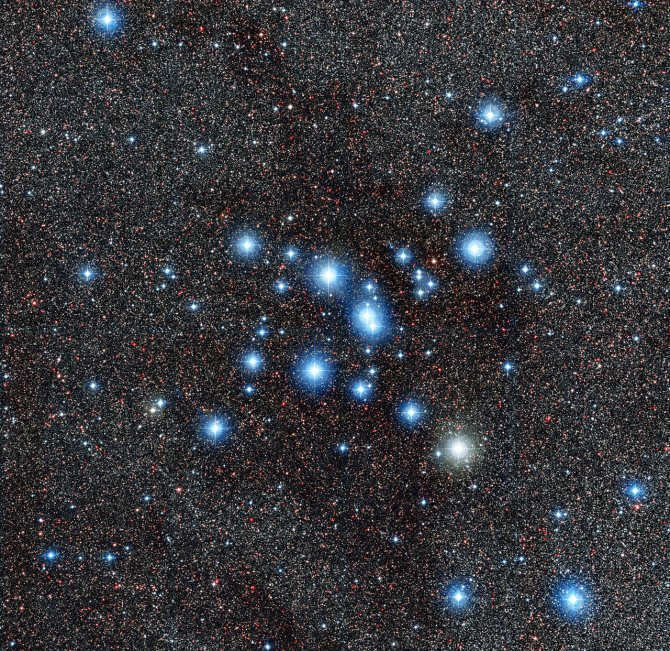
Messier 7 star cluster, ESO image
As civilization developed, the understanding of the structure of the night sky evolved. Mystical and poetic ideas gave way to rational explanations, but the names from history remained. It was discovered that stars that appeared close to each other could actually be far apart, and vice versa. This led to the need for a stellar hierarchy that aligned with modern understanding of the Universe. Thus, the term “star clusters” emerged in astronomical classification, referring to groups of stars that move together within a galaxy.
These formations are incredibly captivating because the celestial bodies within them were created around the same time and are situated at a consistent distance from the observer on Earth, according to cosmic standards. This presents additional opportunities to compare radiation from various sources within a cluster without needing to make extensive corrections. The signals emitted from these sources undergo similar distortions, which greatly simplifies the research conducted by astrophysicists who study the structure and evolution of stellar systems, as well as the broader universe. They also investigate the principles behind galaxy formation, the processes involved in star creation and destruction, and much more.
Main article: Globular cluster
The Hubble telescope image shows the globular cluster M15 located in the constellation Pegasus.
Globular clusters are star groups that are densely packed together in a roughly spherical shape, spanning a diameter of 10 to 30 light-years. These clusters typically consist of 10,000 to several million stars, which are predominantly Population II and extremely ancient in age.
Globular clusters typically consist of yellow and red stars, with masses below two solar masses[2]. This composition of globular clusters arises from the fact that the hotter and more massive stars undergo supernova explosions or, during their evolution into white dwarfs, pass through the planetary nebula phase. Occasionally, globular clusters contain what are known as blue stragglers, which stand out from the other stars in the Hertzsprung-Russell diagram for a given cluster. There are several theories regarding the origin of blue straggler stars, with the most popular one explaining them as either current or former binary stars in the process of merging or already merged[3].
Globular clusters in our galaxy are found in a spherical region known as the galactic halo, which surrounds the galactic center. These clusters orbit the center of the galaxy in elliptical paths. In 1917, the renowned American astronomer Harlow Shapley used the distribution of globular clusters to make the initial calculation of the distance between the Sun and the galactic center. This calculation was widely accepted as accurate for many years [4].
Until the mid-1990s, the astronomical community was engaged in extensive discussions regarding the age of globular clusters. This was due to the fact that calculations based on the theory of stellar evolution indicated that the age of the oldest stars in globular clusters was greater than the assumed age of the Universe. However, thanks to more accurate measurements of the distances to globular clusters using ESA’s Hipparcos space telescope, as well as more precise measurements of the Hubble constant, this paradox was resolved. These measurements enabled us to estimate the age of the Universe at approximately 13 billion years, with the age of the oldest stars being slightly younger by a few hundred million years. In 2007, astronomer Richard Ellis of the California Institute of Technology made a groundbreaking discovery using the 10-meter Keck II telescope. He found 6 star clusters that formed 13.2 billion years ago, when the universe was only 500 million years old.
There are certain globular clusters that can be seen with the naked eye, with the most prominent one being Omega Centauri, which has been known since ancient times and was cataloged as a star even before telescopes were invented. The brightest globular cluster that can be seen in the northern hemisphere is Messier 13 in the Hercules constellation.
Classification of star clusters
What Hubble said about star clusters
Star clusters are typically categorized into two main groups: globular and open. However, there are instances when this classification is expanded, as not all celestial formations can be strictly placed into one of these categories.
Globular clusters
There are over ten thousand globular clusters in certain galaxies, making them quite abundant. These clusters are remarkably ancient, with an age surpassing 10 billion years. In fact, they are believed to be as old as the Universe itself. Scientists have been able to decipher the information emitted by these clusters, providing valuable insights into their formation and evolution.
Collection of spherical clusters of stars
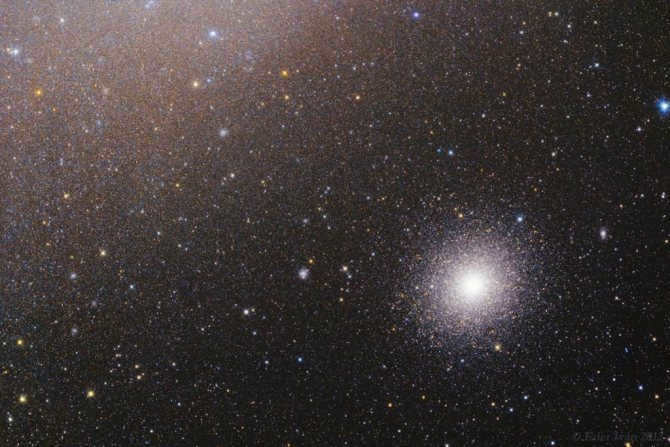
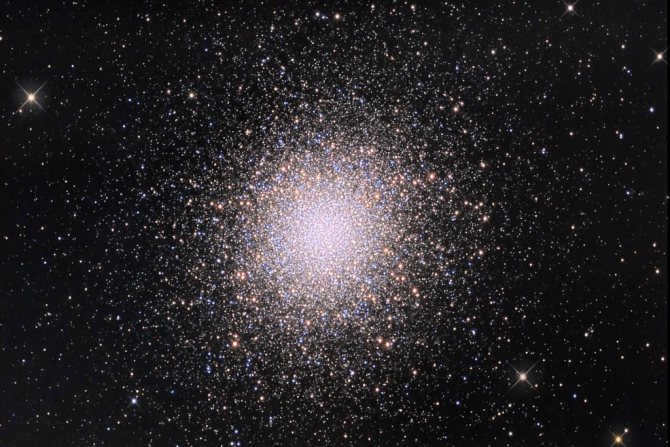
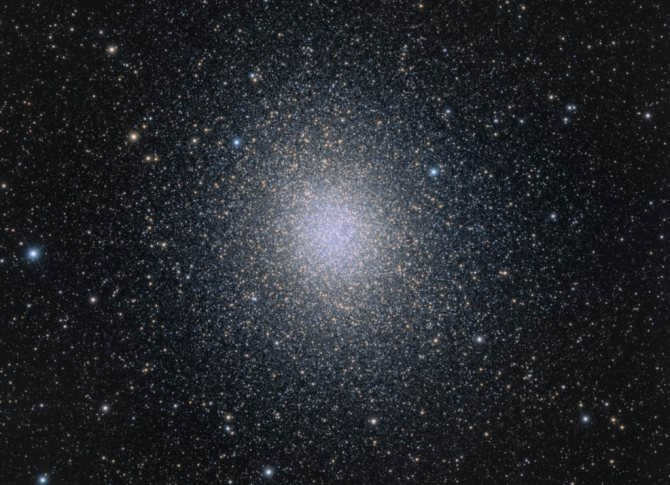
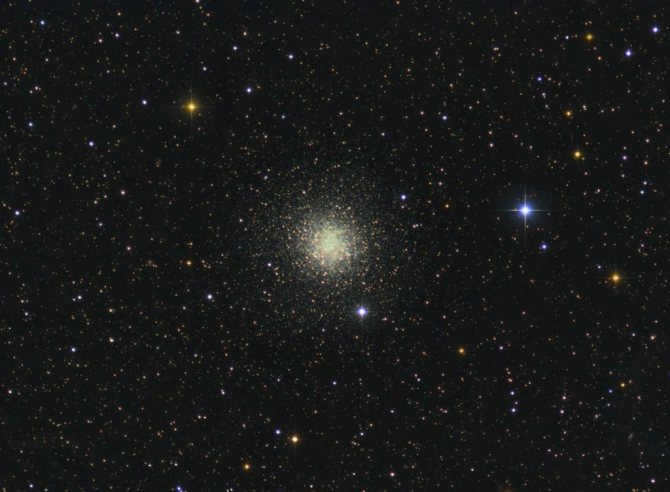
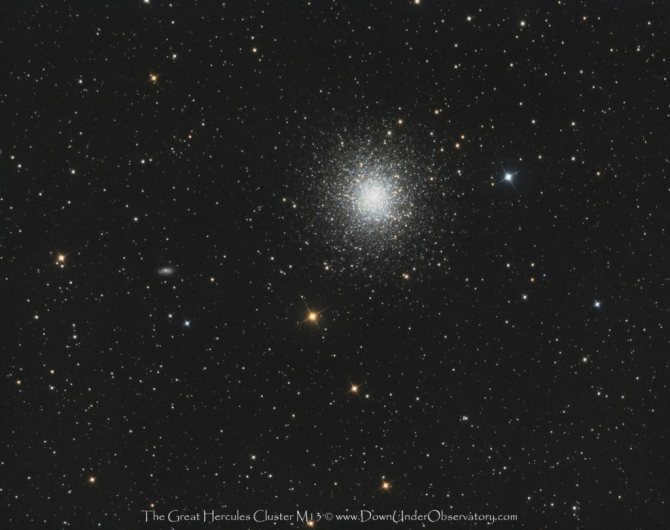
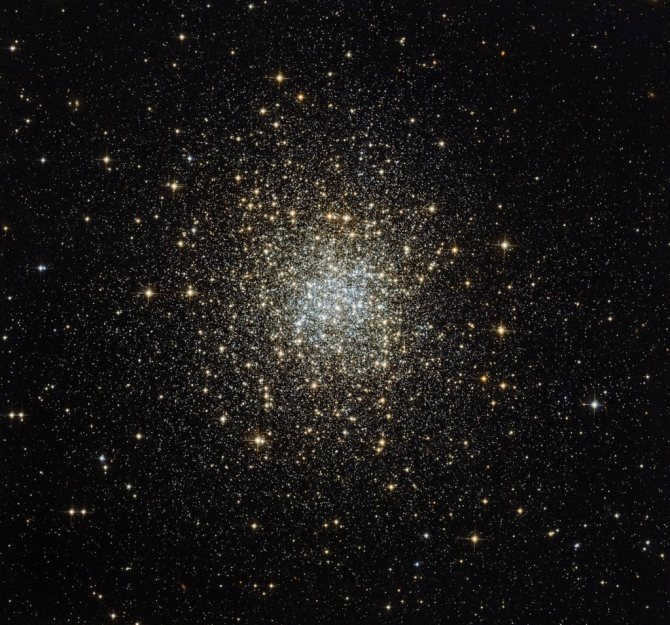
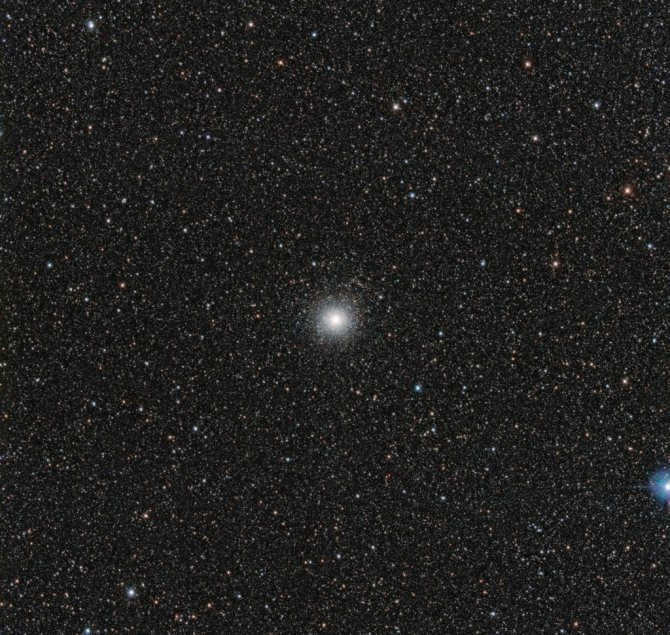
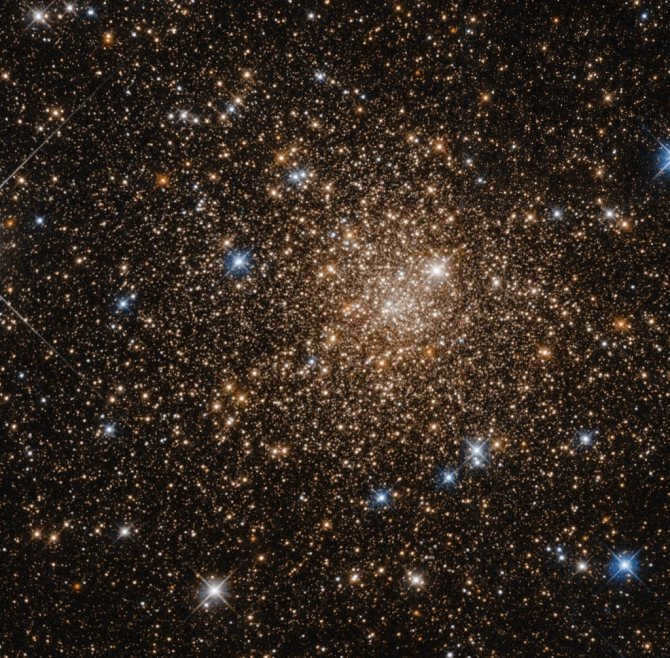
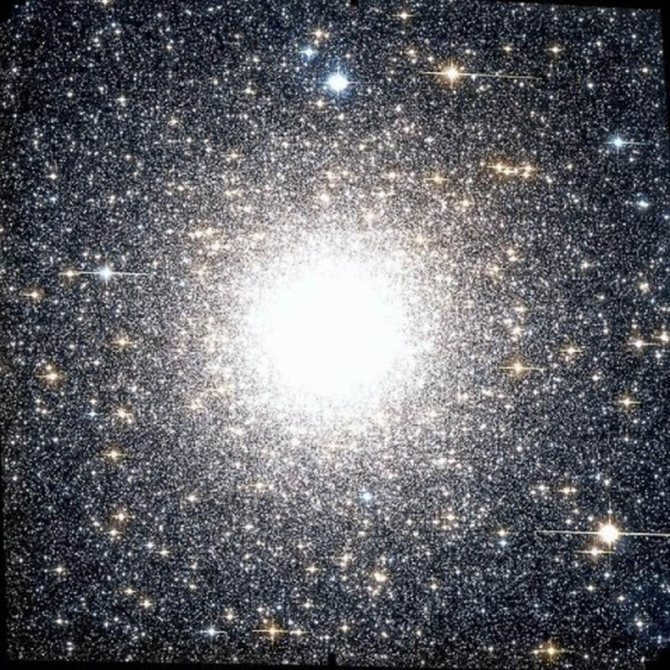
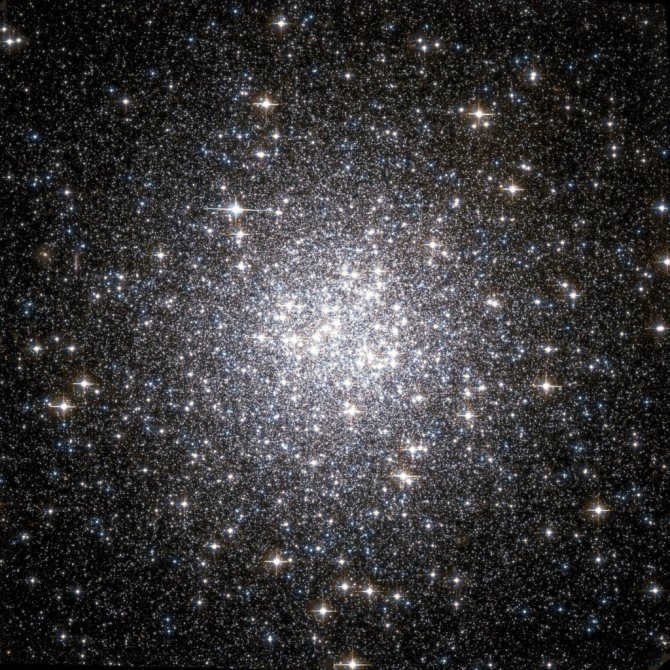
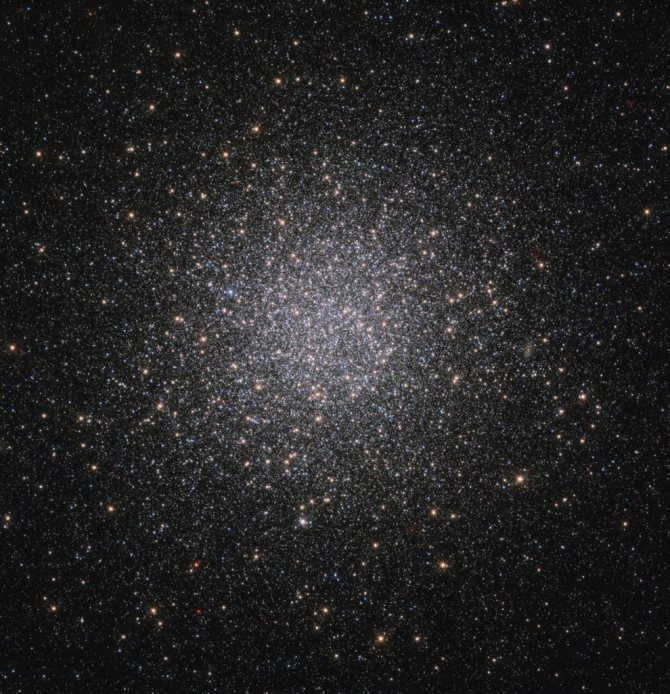
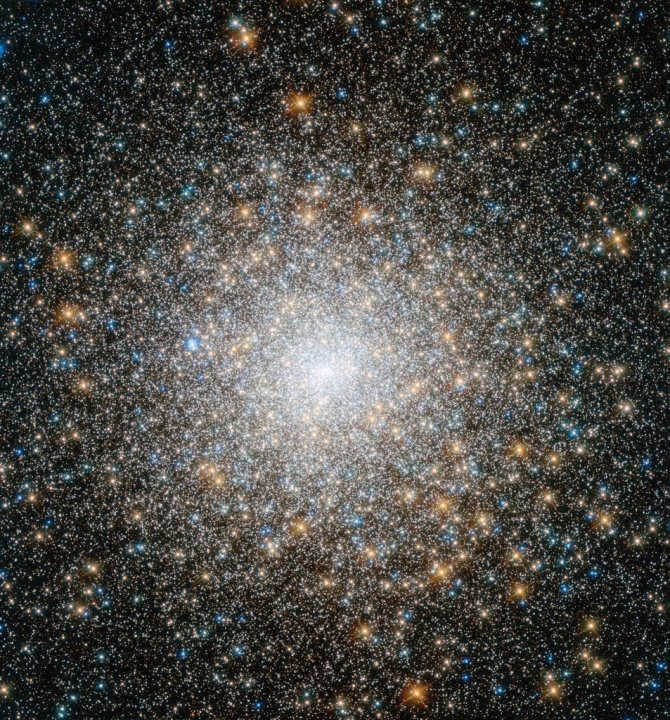
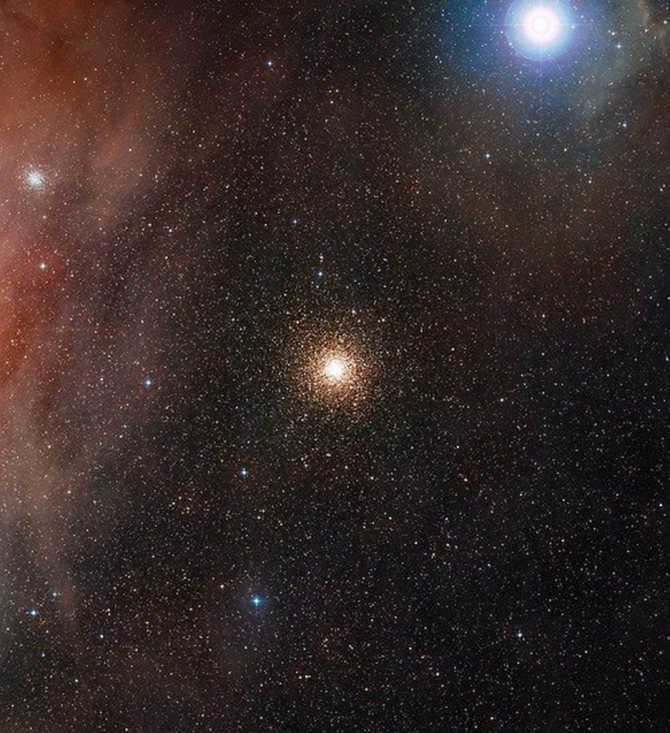
Dispersed groups
Dispersed groups are significantly more youthful compared to globular clusters – the duration of these stellar conglomerates is mostly assessed at several hundred million years. They can only be observed in spiral or asymmetrical galaxies, which have a tendency to sustain star formation activities, in contrast to elliptical galaxies, for instance.
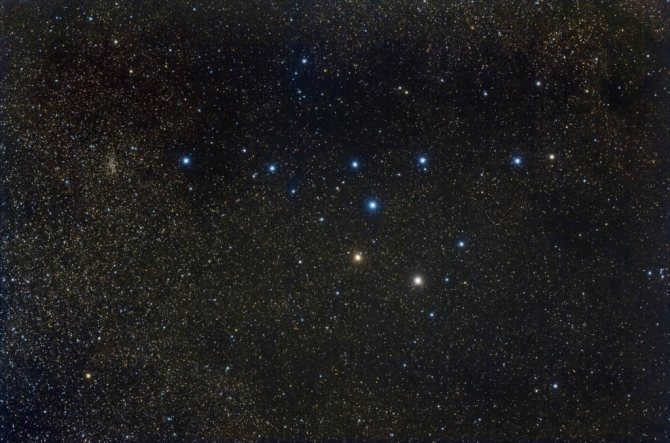
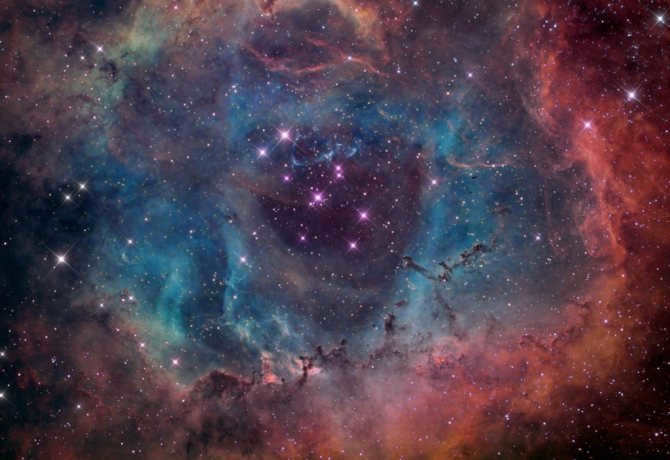
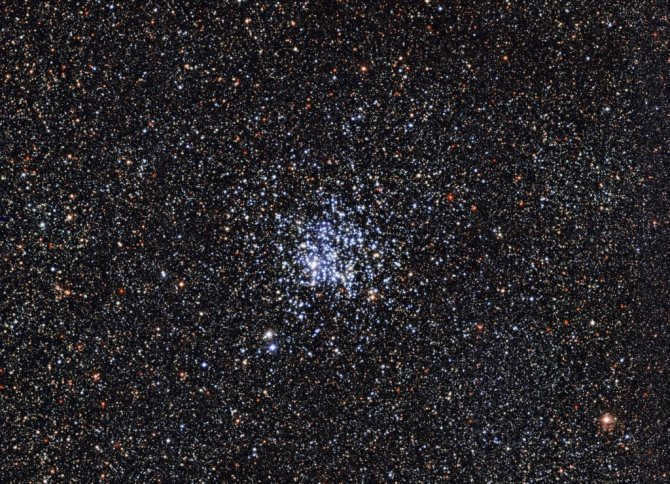
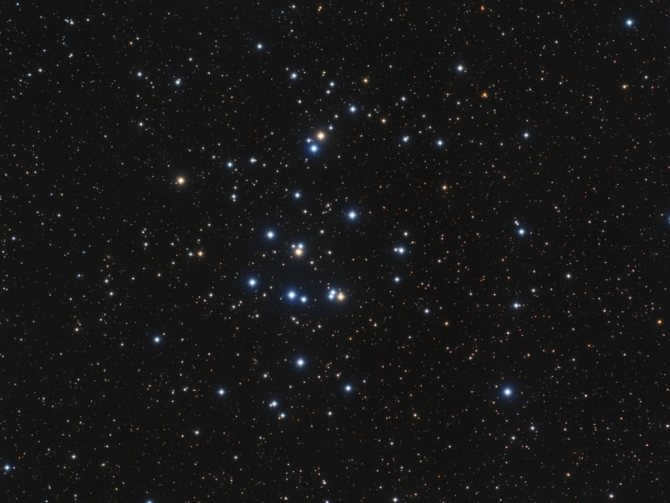
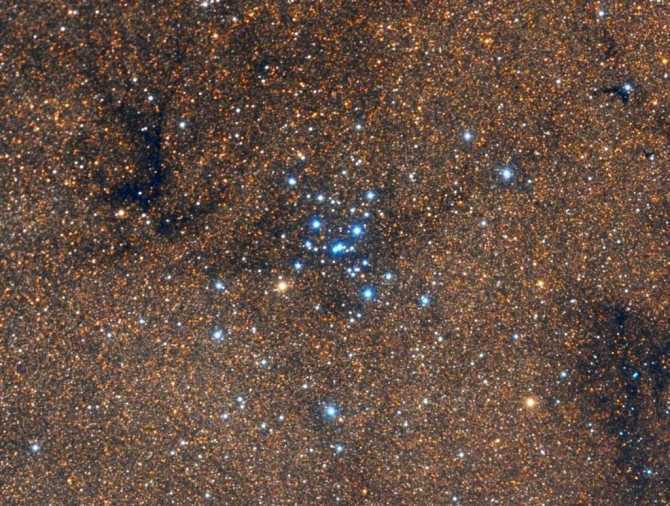
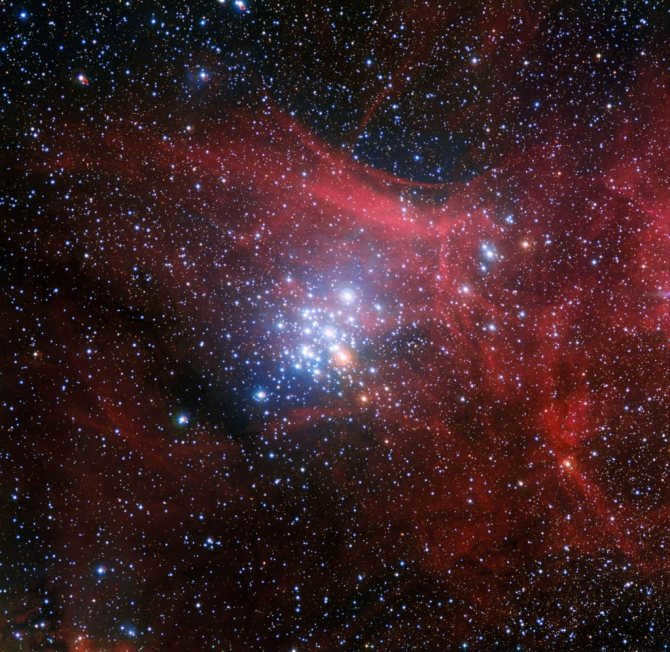
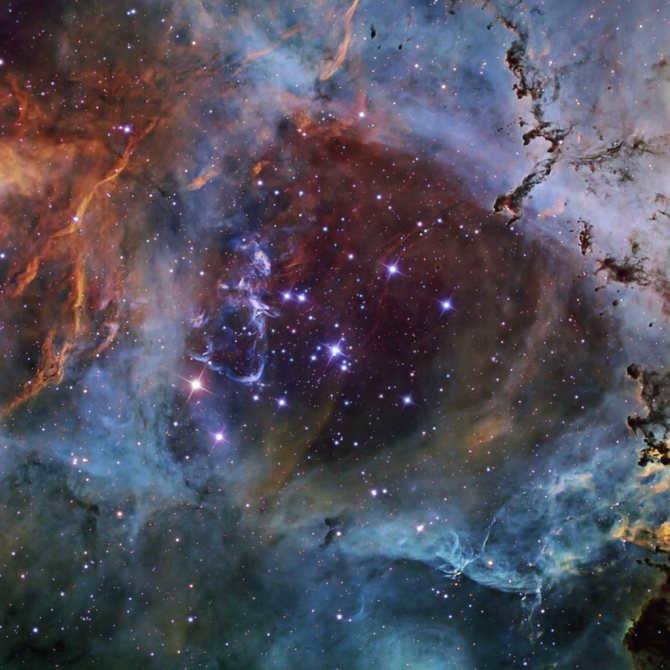
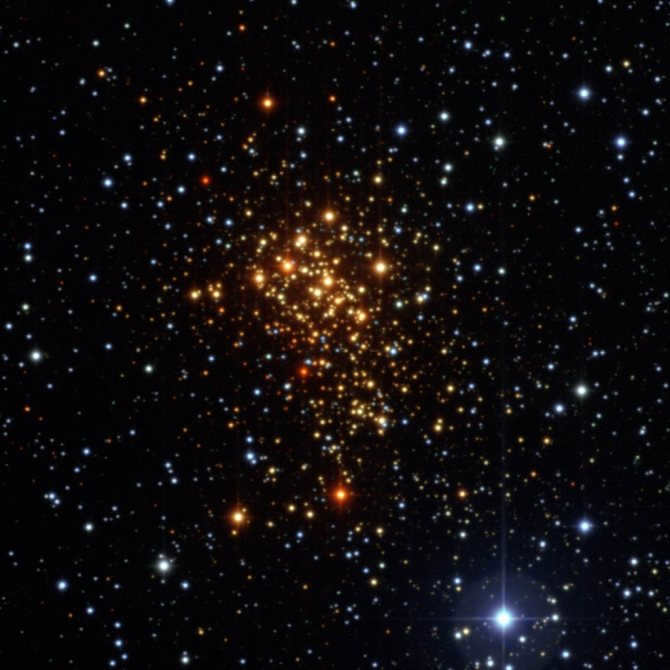
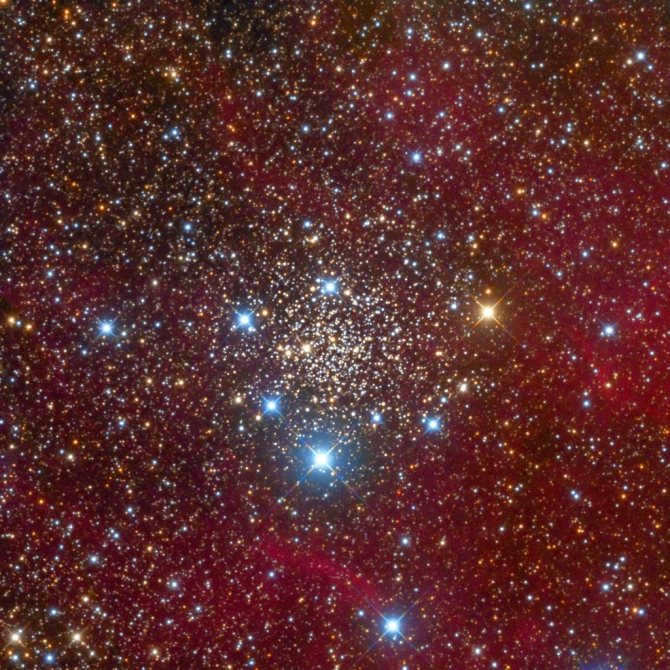
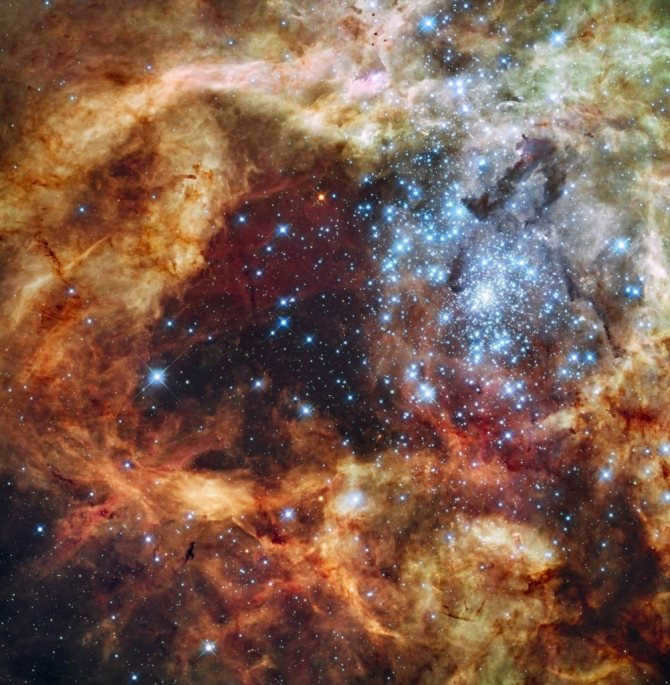
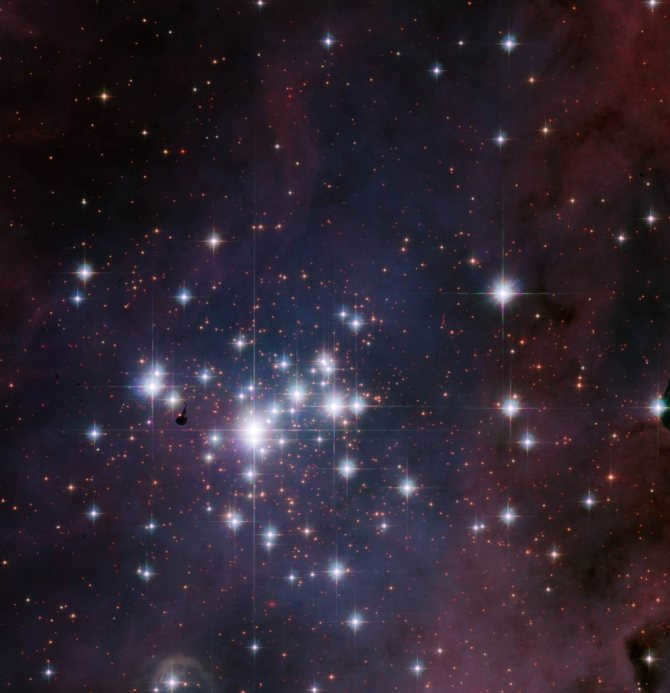
Scattered clusters exhibit a lower density of stars compared to globular clusters. However, when observing scattered clusters, it is possible to observe each individual star separately, as they are spread out at significant distances from one another and do not blend together in the overall sky.
Scattered and globular star clusters and associations
Scattered groups of stars are found throughout our stellar system, the Milky Way, and are interspersed with individual stars: they resemble major urban areas within a nation. Due to their location within the cosmos, they are occasionally referred to as galactic, and because of the sparse clustering of stars towards the center of the group, they are known as scattered. These clusters contain thousands of stars, spread out in space without much pattern, much like the tents of a nomadic gypsy camp.
An illustration of scattered groupings can be observed in the Pleiades. They are known by various names, such as Stozharas, Duck’s Nest, and Volosozhar. During the autumn season, these clusters ascend in the evening, and by winter evenings, they can be seen at a high altitude in the sky. With an unaided average eye, one can perceive six stars in this assemblage, while a more perceptive eye may discern between seven to eleven stars. When viewed through a telescope, hundreds of stars of diverse luminosity flicker in this region. The membership of these stars within a specific cluster is determined by their shared motion in space. Consequently, it becomes possible to differentiate stars that are either closer or more distant, and those that are merely coincidentally aligned with the star cluster.
One can create a comparable luminosity-spectrum diagram for stars in clusters by measuring their apparent stellar magnitudes or determining their colors, which is a more accessible and simpler method. This diagram is often similar to the one made for stars in the Sun’s nearest neighborhood. However, it may be incomplete due to the absence of a branch of giants and the inability to observe white dwarfs in distant clusters.
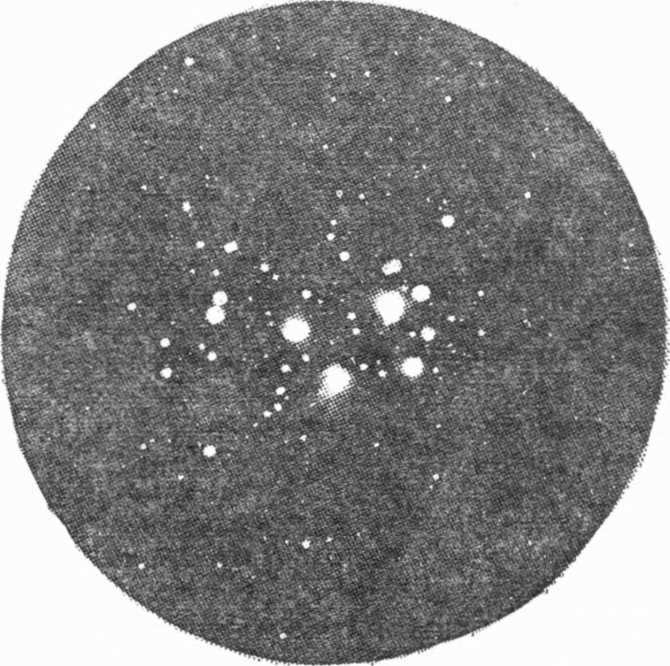
Figure 168. A photo showing the Pleiades star cluster, which is scattered across the galaxy.
By comparing it with the diagram of the Sun’s neighborhood and considering them equal, we can find the difference in m
—
M
, which is the difference between the apparent magnitude of the stars in each spectral class in the cluster and their absolute magnitude. From this difference, as we have previously observed, we can easily calculate the distance to the cluster. Once we know the distance and measure the apparent angular diameter of the cluster, we can easily determine its linear diameter in light-years. For instance, the Pleiades are located 320 light-years away from us, and the diameter of this star group is approximately 30 light-years.
It is easy to observe a small cluster of stars around the red Aldebaran, which is the brightest star in the Taurus constellation. This cluster is more scattered compared to the Pleiades cluster. The Hyades cluster consists of more than 1000 scattered clusters, some of which are distant, faintly luminous, or concealed by dark nebulae.
V.A. Ambartsumian identified clusters of stars in the celestial sphere, which he termed associations. The stars within associations possess similar physical characteristics and are more widely dispersed compared to the stars found in scattered clusters. Interestingly, these scattered clusters often form part of associations themselves. Ambartsumian classified O-associations as groups of hot stars containing O-class or early B-class stars, while T-associations consisted of Taurus-type variable stars. Associations are discernible in the sky due to the apparent concentration of a small number of stars. However, it is important to verify the actual existence of such a concentration of O and B-class stars. This is because the Milky Way contains numerous clouds of dark matter, and in the spaces between these clouds, there exist “corridors of visibility”. These corridors enable the observation of distant hot stars amidst closer stars, creating the illusion of high density in a specific area, even though such close clustering does not actually occur.
However, even in the presence of O-associations, the gravitational pull between the stars within the association is minimal due to their significant separation. As a result, the stars in this region will gradually disperse, making it challenging to determine the extent of their dispersal and leading to ongoing debates. V.A. Ambartsumian proposes that O-associations serve as the birthplace for both hot and cooler stars, acting as their cradles alongside star clusters. These associations are characterized by a size that falls between that of scattered star clusters and large star clouds.
The Hercules star cluster is a prime example of a globular star cluster, with about a hundred similar clusters known to exist. When viewed through binoculars, it appears as a hazy star with a magnitude of around 6. However, a more powerful telescope or photograph reveals that it is actually a dense ball-shaped cluster of hundreds of thousands of stars. Only the brightest stars are visible to us, while fainter stars like our Sun remain unseen. Due to their distance from Earth and the sheer number of stars, the cluster appears as a continuous and radiant glow, especially towards its center.
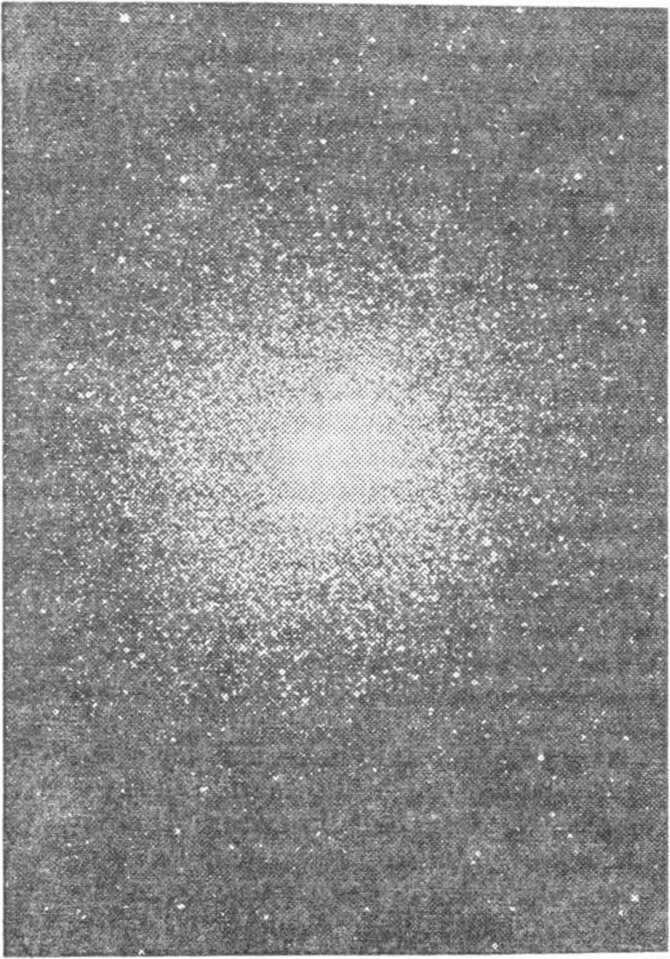
Fig. 169. A globular star cluster.
The mystery of the distances of globular star clusters remained unsolved until the discovery of Cepheids within their population. Just picture this: in a small area of the sky where a cluster resides, you stumble upon one, then another, and even a third Cepheid. And as you venture further away from the cluster, the number of Cepheids dwindles to none. Is this mere happenstance?
A solitary Cepheid, positioned either closer or farther from us than the cluster, could potentially appear within the cluster – this would be considered a “coincidence”. If not just one, but multiple Cepheids in the area project into the cluster, it cannot simply be dismissed as a “coincidence”. It is clear that the Cepheids are indeed members of the globular cluster itself. The presence of Cepheids has enabled scientists to determine the distances and sizes of numerous globular clusters. In cases where no Cepheids were present, distances were estimated based on the apparent brightness of the brightest stars, as suggested by Shepley (USA). For the most distant clusters, which appeared as mere spots without individual stars visible, distances were calculated using the apparent angular size and total luminosity, since all globular clusters had similar true linear size and total luminosity.
One of the nearest globular clusters to our location is located in the Hercules constellation, and it is situated approximately 20,000 light-years away. This cluster has a diameter of about one hundred light-years. On the other hand, the farthest globular clusters are positioned at a distance of 230,000 light-years from us.
The spectrum-luminosity diagram for stars within globular clusters exhibits notable differences compared to the diagram for scattered clusters and those in the vicinity of the Sun. In these clusters, there are various types of stars present. By comparing these diagrams across different stellar systems, we can derive significant insights into the life trajectories of stars and their respective systems. Further details on this topic will be explored in Chapter 11.
The German astronomer Baade, who worked in the USA, was the pioneer in identifying two distinct types of stellar populations with variations in their spatial distribution. Research conducted by the Soviet astronomer B.V. Kukarkin and his team revealed that objects possessing diverse physical attributes (such as variable stars of various classifications, star clusters of different varieties, etc.) are integral parts of the multifaceted constituents of our stellar system: flat, spherical, and intermediate. It is reasonable to hypothesize that the objects found within these distinct constituents have disparate origins and ages.
What lies beyond this house? Are there other star houses out there, other star universes, other galaxies, are they similar or dissimilar to ours? You can find more information about this in chapter 10.
Go back to the previous page
Materials categorized by topic
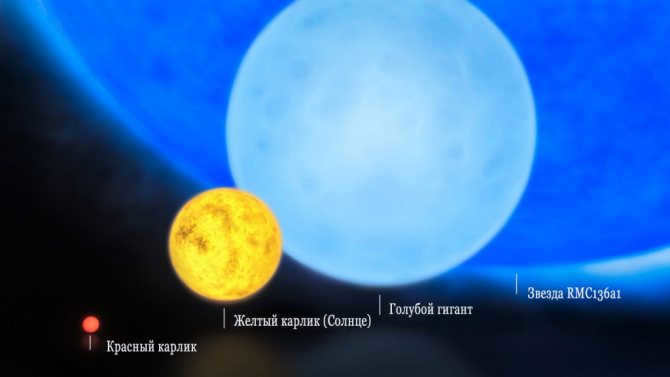
These formations are considered to be the most recent in the Universe and have an age of no more than a few tens of millions of years. The gravitational connections within them are quite weak and insufficient to maintain the stability of the system for an extended period of time, thus they are bound to disintegrate within a relatively short span.
According to scientific belief, the associations could not have formed through the gravitational capture of passing stars. This suggests that the stars in the associations were actually born together and are approximately the same age. In comparison to clusters, the number of members in these associations is relatively small, usually only in the tens, and they are located within a few hundred light-years of each other. This discovery provides scientific evidence that supports the theory of ongoing star formation processes in the Universe, where new stars are born in groups rather than individually.
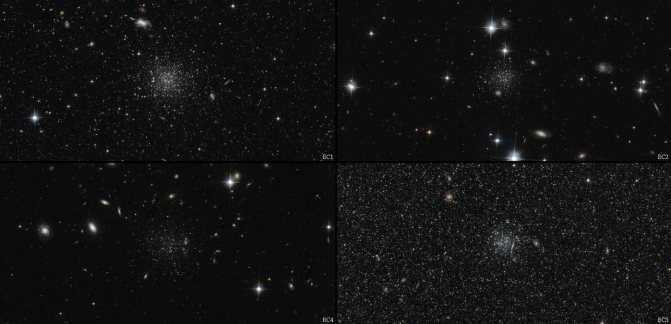
Globular clusters in the halo of the Andromeda galaxy
Previously, it was thought that globular clusters, being the oldest formations of stars, would have lost their internal rotational motion due to their age, and could be considered as simple systems. However, in 2014, a team of researchers from the Max Planck Institute for Extraterrestrial Physics, led by Maximilian Fabricius, discovered through long-term observations of 11 globular clusters in the Milky Way that their central region continues to exhibit rotation.
Most current theories are unable to account for this phenomenon, which suggests that if the findings are confirmed, there may be implications for both the theoretical understanding of these clusters and the mathematical models used to describe their motion.
What is the process of star cluster formation? What are the distinctions between them, how are they positioned in the expanse of our Milky Way, and how is their age ascertained? Alexei Rastorguev, a Doctor of Physical and Mathematical Sciences, enlightens us on these topics.
Clusters of Stars
STAR clusters are collections of stars that are linked together by the forces of mutual gravitational attraction. These clusters share a common origin, similar age, and chemical composition. The number of stars in a single cluster can vary greatly, ranging from 20-30 to several million. Star clusters typically have a dense central core surrounded by a less dense corona. The size of star clusters can range from a few to 280 pc. In our Galaxy, star clusters have historically been categorized as either scattered or globular clusters. The distinction between these two types is primarily based on their mass and age. Scattered star clusters are relatively young and typically consist of tens to thousands of stars. On the other hand, globular star clusters are much older and can contain tens of thousands to several million stars. Due to their abundance of stars, globular clusters have a more spherical appearance, while scattered clusters appear more wispy (see Figures 1 and 2). Some examples of scattered clusters include the Pleiades and the Hyades, while M3 in the constellation Hound Dog and M13 in the constellation Hercules are examples of globular clusters.
Star clusters do not have a standardized naming system, with some clusters being discovered prior to the invention of the telescope and thus having historical names like the Pleiades, the Hyades, and the nebulous spot in the constellation of Cancer known as the Crèche. The brightest stars in the Crèche, which are located 160 pc away from us, have a magnitude of approximately 6.5, making them visible only to those with extremely sharp eyes and in very dark skies. However, binoculars provide a clear view of the cluster. A few other clusters can be seen with the naked eye as faint “foggy stars,” but their true nature could not be determined until the telescope was invented. Conversely, the constellation Veronica’s Hair has long been known to have a scattering of faint stars, which gave it its name. Although these stars are visible to the naked eye, it was not until 1915 that it was confirmed that the scatter of stars in Veronica’s Hair is actually a single cluster rather than a random grouping in the sky.
The clustering of star formations in our Galaxy is primarily found in the Galactic plane, with velocities relative to the Sun averaging at around 20 km/s. A distinction can be made between star clusters that align with the spiral branches of the Galaxy, which are relatively new (less than 100 million years old), and intermediate-aged clusters (disk clusters) that do not exhibit any connection to the spiral branches and are less concentrated in the Galactic plane. Currently, about 1500 scattered star clusters have been identified and studied, but it is likely that many more are hidden in remote regions of the Galaxy, obscured by interstellar dust clouds. All scattered star clusters have the typical metal content of stars found in the flat component of the Galaxy.
Globular star clusters are found throughout the Galaxy and are concentrated towards its center. These clusters have high velocities relative to the Sun, averaging at 170 km/s. Up until the 21st century, approximately 160 globular clusters have been discovered. It is possible that some clusters hidden behind the dust clouds of the galactic disk remain undetected. However, calculations suggest that there are no more than 200 globular star clusters in total. These clusters tend to have a low metal content, but those observed in the central region of the Galaxy are richer in metals compared to those in the outer regions.
The examination of Hertzsprung-Russell diagrams offers crucial insights into the development of stellar assemblages. These diagrams exhibit notable disparities between typical dispersed and globular star clusters within the Milky Way. Dispersed clusters showcase a greater abundance of massive stars in the main-sequence phase compared to globular clusters. Certain dispersed star clusters even harbor stars with masses ranging from 15-20 ΜΘ (where ΜΘ represents the mass of the Sun). The presence of these luminous stars with limited lifespans suggests that the dispersed clusters themselves are relatively youthful.
In globular star clusters, the majority of stars have low luminosities. These stars are in the main sequence phase and have masses less than 0.7-0.8 solar masses. The few brightest stars in globular star clusters are red giants in the late stages of evolution, after leaving the main sequence on the Hertzsprung-Russell diagram, where hydrogen fusion has already ceased in their cores. These red giants have masses around 0.8 solar masses. Interpreting the Hertzsprung-Russell diagrams in terms of stellar evolution theory leads to the conclusion that the stars in globular star clusters are 12-14 billion years old, much older than the stars in scattered clusters.
Star clusters are created within massive clouds of interstellar matter as a result of the gravitational instability of these clouds. Typically, this process takes place within the core of the cloud, which is the densest and coldest region. When massive stars form within the developing star cluster, they generate enough heat to disperse and eliminate the surrounding cloud. As a result, the fastest-moving stars escape the cluster, forming what is known as a stellar association, while the remaining stars, which remain gravitationally bound, continue to form a long-lasting star cluster.
Star clusters undergo a dynamic evolution due to external and internal forces. Stars in the cluster’s core converge, resulting in an exchange of energy between their motions. This exchange can cause some stars to acquire excess energy, leading them to leave the cluster or migrate to the corona region. Eventually, these stars “evaporate” under the influence of gravitational disturbances from the Galaxy. The destruction of star clusters is further accelerated by gravitational “shocks” from passing massive interstellar clouds. Particularly strong shocks come from giant molecular clouds with masses up to 106ΜΘ. The collapse of star clusters occurs most rapidly in those with a small number of members, known as scattered clusters. As a result, only the most massive star clusters, known as globular clusters, have survived among the older clusters in our Galaxy.
Typically, young scattered star clusters consist of a mix of dim members, including Orion and flare variable stars. Occasionally, scattered star clusters will also contain bright stars, such as Cepheids. It is not uncommon to find variable stars like RR Lyra and W Virgo in certain globular star clusters. In fact, in the densest globular star clusters, about two dozen of them have been found to have X-ray sources in their cores. These sources are typically associated with close binary systems, where one component is a neutron star or a black hole that is surrounded by an accretion disk.
The nearest star clusters to the Sun, such as the Hyades, are referred to as moving star clusters. This is due to the fact that the proper motions of their members, when observed from our perspective, intersect at a single point on the celestial sphere. These moving star clusters are of great significance in determining stellar distances, as their distances can be accurately calculated using a simple geometric method.
For further information on this topic, please refer to the fields of Stellar Astronomy and Stellar Dynamics.
References:
– Kholopov P. N. Star clusters. Moscow, 1981.
– Spitzer L. Dynamic evolution of globular clusters. Moscow, 1990.

Alcyone, Asterope, Electra, Kelaino, Maia, Merope, and Tigeta. What a lovely selection of names for salons!
These names were originally given to the seven daughters of the Greek titan Atlas and the oceanid Pleione. It must have been quite a challenge for Atlas to raise, care for, educate, and find suitable husbands for all seven of his daughters…
The seven sisters from Greek mythology are also known as the Pleiades.
The Seven Sisters
can be rephrased as
The Pleiades
.
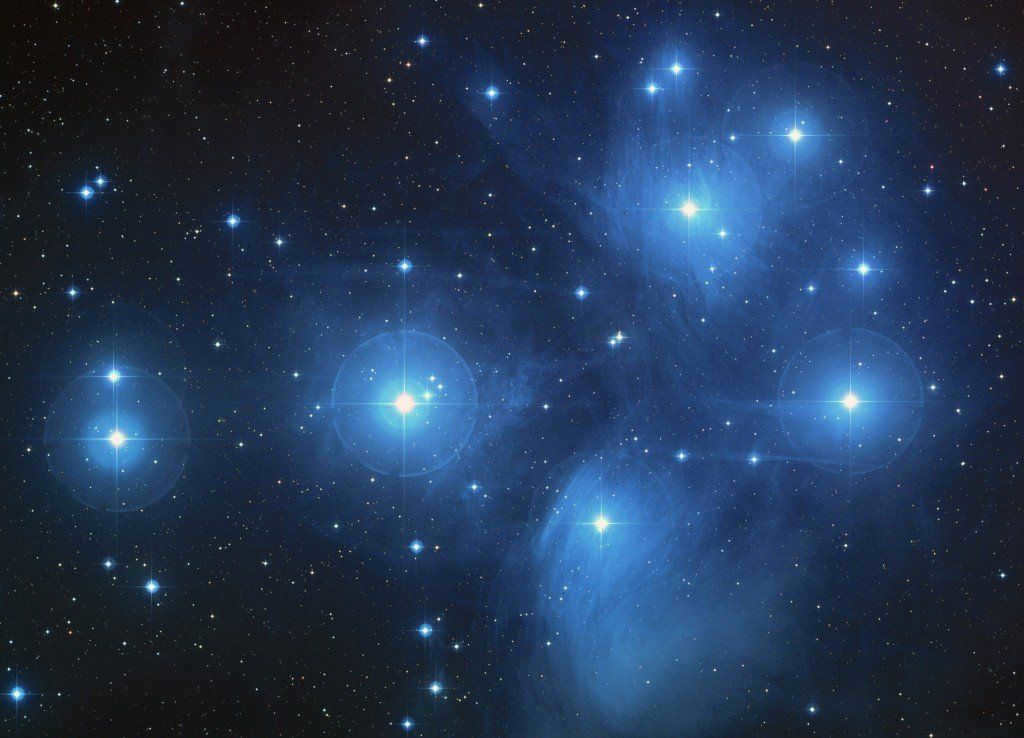
The Pleiades cluster, known as the Pleiades in the night sky, is a fascinating collection of stars. This unique star cluster has captivated people from various cultures for centuries. It is undoubtedly the most prominent star cluster in the sky and has inspired countless stories and legends.
There are numerous tales gathered from every part of the globe.
However, besides being part of mythology, the Pleiades also held practical importance for humanity. Their presence in the sky served as an indicator for sowing or harvesting. Additionally, on the ancient “celestial disk from Nebra” that is 3,600 years old, the Pleiades were utilized to establish the guidelines for aligning the lunar and solar calendars.
Instead, let us discover the true nature of the Pleiades star cluster.
The Pleiades cluster: A Northern Phenomenon
Sometimes referred to as the “Seven Sisters,” the Pleiades cluster is a stunning sight in the night sky. Although the naked eye can typically discern seven stars within the cluster, the actual number of stars is much greater, totaling around 500. The variability of the cluster’s visibility is due in part to the fluctuating brightness of Pleione, one of its stars. Pleione’s slow and irregular changes in brightness make it difficult to spot on darker nights. Among the stars in the cluster, Alcyone shines brightest, followed by Atlas, Electra, and Maia.
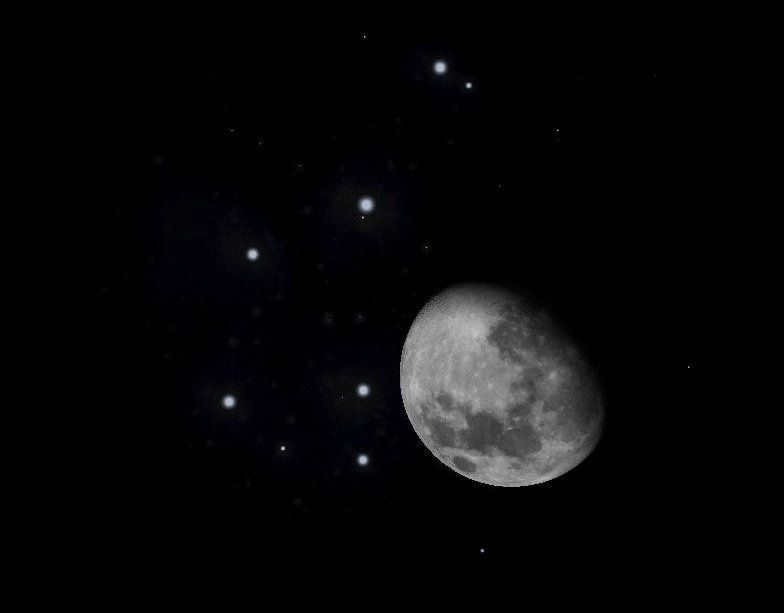
The Pleiades cluster can be observed freely in the sky of the northern hemisphere for most of the year. It only disappears over the horizon between late April and early July during the night. Locating the Pleiades is a simple task as it is situated in the Taurus constellation, just above Orion and below Perseus. Although the star cluster is visible to the naked eye, it may appear small. Despite being four times the size of the full Moon, our eyes have a tendency to perceive bright objects as larger, which makes the Moon appear much bigger than the Pleiades.
The enigma of the Pleiades
Despite being observed by humans for countless millennia, the Pleiades still hold a number of unresolved enigmas. One such mystery revolves around their distance. The parallax method is the simplest technique for measuring distances in space. By viewing an object from different vantage points, its position appears to shift in relation to something else. As the Earth orbits the sun, the positions of the stars in the sky appear to change when observed in January versus July. Over the course of the past six months, the Earth has shifted its position by a staggering 300 million kilometers, causing us to view the stars from a slightly altered perspective. Utilizing this method, among others, scientists have determined that the Pleiades are located approximately 440 light years away.
The Hipparcos satellite, once a highly precise tool for determining the positions of stars, employed the parallax method to measure their distances. According to its findings, the Pleiades star cluster is situated approximately 390 light years from Earth. This deviates by over 10 percent from earlier measurements, which cannot be attributed to inaccuracies in the diverse methods employed. It suggests that there may have been an unforeseen error or anomaly.
If the Hipparcos data is accurate, there must be an issue with the stars themselves. Why? Here’s the deal. Astronomers have the ability to determine the apparent brightness of the Pleiades stars. However, this apparent brightness is relative and dependent on distance. True brightness, on the other hand, is absolute. By knowing the distance and the apparent magnitude, one can calculate the absolute value. Scientists are aware that the Pleiades stars are quite young, being just under 100 million years old. Additionally, astronomers have developed models that describe the behavior of such young stars. These models align perfectly with observations of all types of stars, including those in the Pleiades. However, this is only the case if we use a distance of 440 light-years as a baseline. If we were to use a distance of 390 light-years, the calculated absolute brightness would not match the existing models.
If we assume that the composition of the Pleiades is unique compared to other stars, then it is likely that they contain a significantly higher amount of helium. In fact, it is estimated that they possess almost 40 percent more helium than the average star. This discovery could have major implications for the scientific community, as it may require a complete rewriting of existing models and the introduction of new physical phenomena to accurately explain the properties of these stars.
New information
The GAIA space telescope, launched in 2013, has provided astronomers with fresh data. Interestingly, the measured distance to the Pleiades matches precisely with previous measurements, which place the Pleiades at a distance of 440 light years. This confirms that GAIA accurately measures distances, unlike the Hipparcos telescope. The mistake made by Hipparcos remains unknown, leaving open the possibility of other factors unrelated to the telescope itself.
The Pleiades have captivated humanity since ancient times. Our ancestors projected their beliefs about gods, demons, and heroes onto these celestial bodies. Today, we engage in scientific discussions about these stars.
Perhaps in the near future, we will uncover completely novel discoveries about the Pleiades.

There are over 1100 star clusters spread throughout our galaxy. These clusters are where stars are born from massive molecular clouds. As these gas and dust clouds undergo gravitational collapse, they begin to rotate faster and faster, eventually breaking apart into dense clumps of gas that give rise to protostars. In certain clusters, thousands or even hundreds of thousands of stars can form simultaneously, although the efficiency of this process is not very high. Approximately 90% of the original molecular cloud is expelled outward due to the pressure of light, and this gas will then wander throughout the galaxy until it becomes part of another cloud.
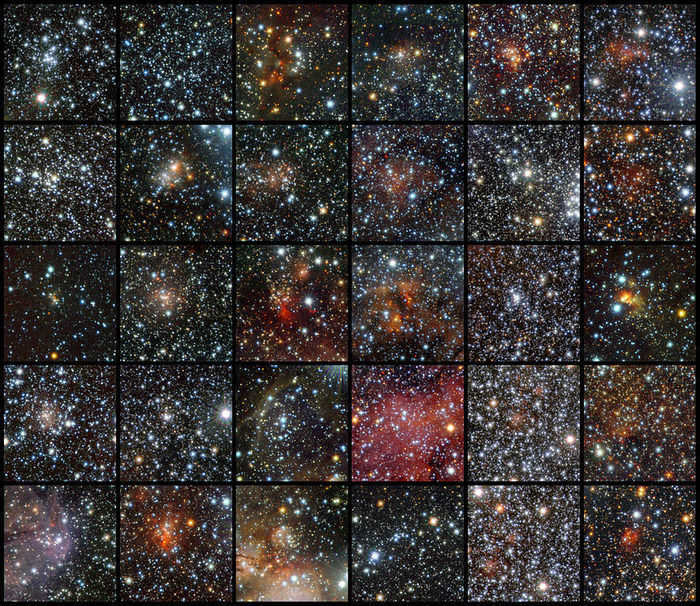
The VISTA infrared telescope has uncovered a collection of 30 star clusters within the Milky Way. These clusters were previously hidden behind clouds of interstellar dust, which infrared light is able to penetrate due to its long wavelength. This unique ability allows infrared light to wrap around dust particles ranging from 10 to 200 nm in diameter.
Now, let’s explore some specific examples of these star clusters:
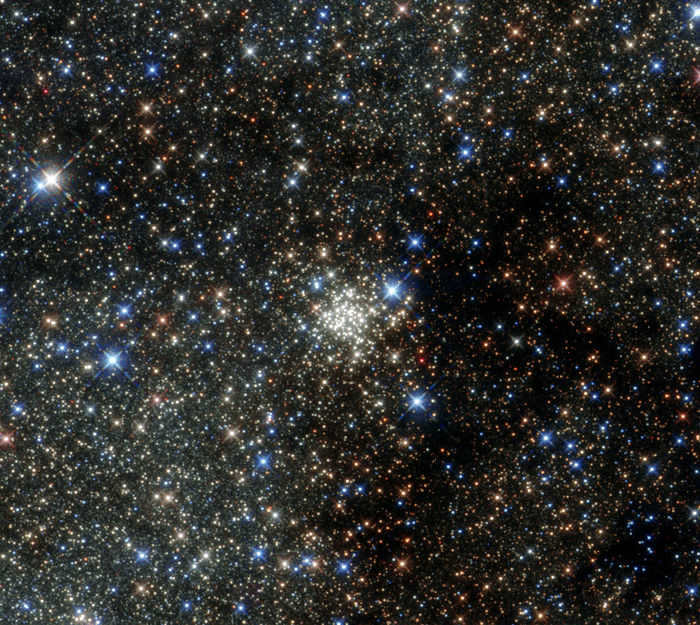
The Arches cluster, situated close to the core of the Milky Way, is the most densely populated star cluster within our galaxy. It is located at a distance of 25 thousand light-years and is comprised of approximately 100 thousand stars. The cluster spans a radius equivalent to the distance between our Sun and the nearest star, Proxima Centauri.
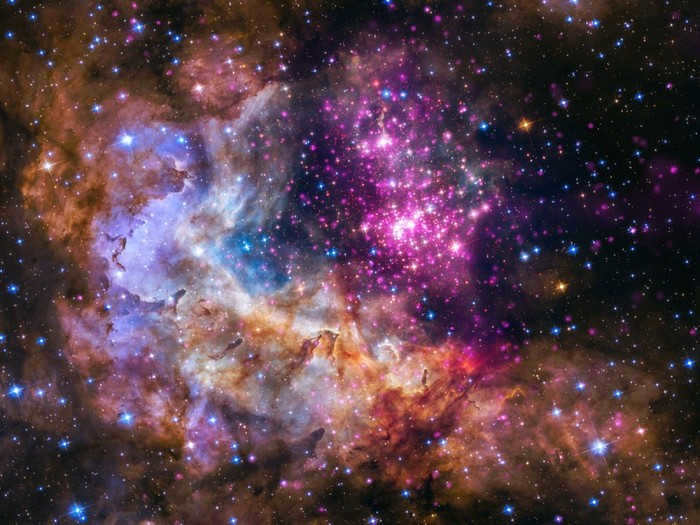
The name of the star collection in the sky is Westerlund 2, which consists of 3 thousand stars. This collection is located within a range of 6-13 light years (for comparison, there are only 64 stars within a range of 16.3 light years from the Sun). The image is a combination of the Hubble anniversary image and the X-ray image taken by the “Chandra” telescope (highlighted in purple light). This image reveals the presence of protostars that have not yet shed their cocoon. It is estimated that the cluster is 2 million years old.
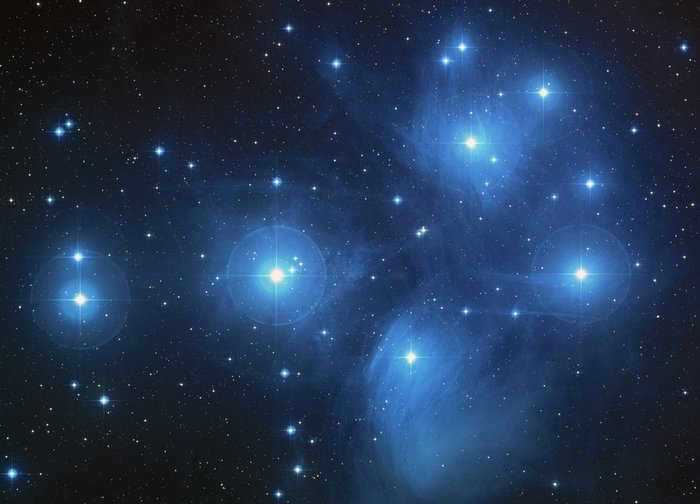
The Pleiades is renowned as the preeminent cluster observable by the unaided eye in the heavens, as its proximity is a mere 440 solar years. Spanning an 8 square year expanse, it encompasses approximately 3,000 stars and boasts an age of roughly 100 million years.
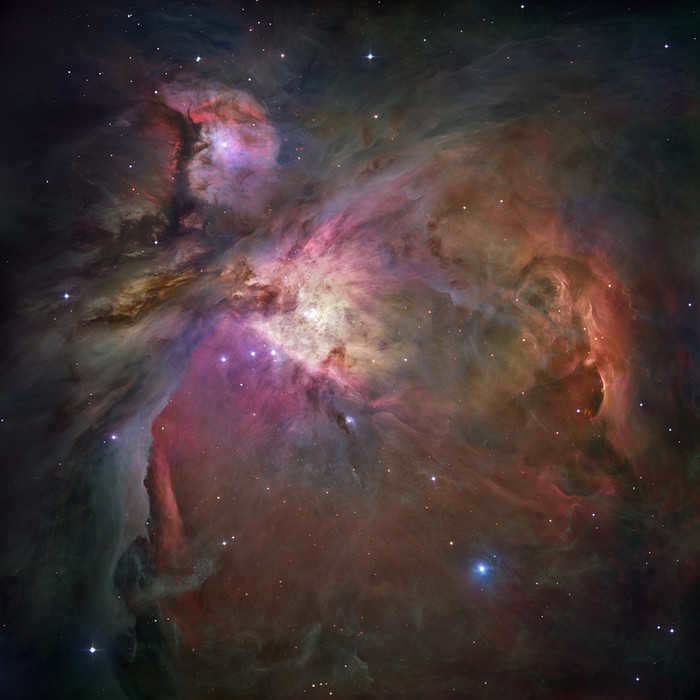
The Orion Nebula contains approximately 2800 stars that are located within a 20 light-year radius. It is situated at a distance of 1344 light-years from Earth.
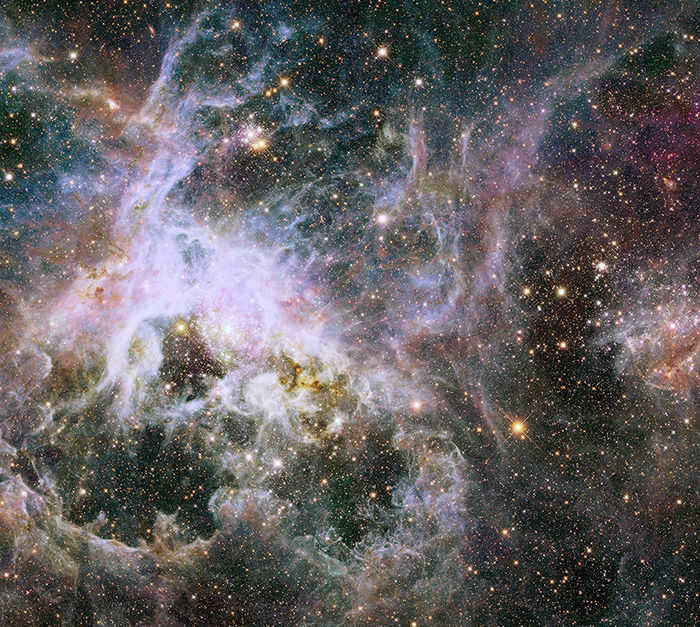
The Tarantula Nebula, situated in the Large Magellanic Cloud, is the most luminous star cluster within the Local Group of galaxies. Its luminosity is of such magnitude that if it were positioned in the same spot as the Orion Nebula, its light would cast a visible shadow to the naked eye. Featuring over 800,000 stars and protostars that range up to 25 million years in age, this nebula is an awe-inspiring sight. The cluster itself is located approximately 170,000 light-years away.
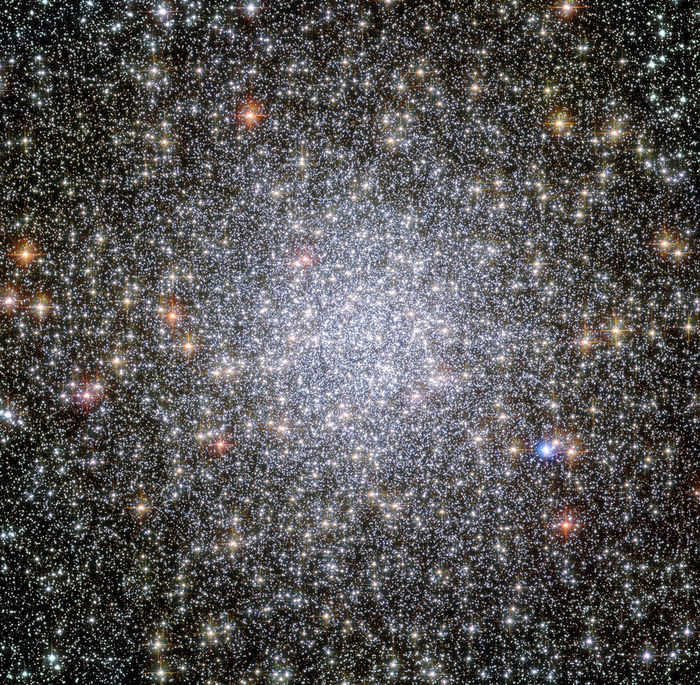
47 Tucana is the second most luminous constellation in the celestial heavens, encompassing a multitude of a million stars within a span of 120 sv. years. It harbors no less than 20 youthful neutron stars and unusually scorching blue stars: the prevailing hypothesis for this anomalous stellar conduct is the fusion of smaller stars, an accurate depiction of the compactness of this stellar conglomerate.
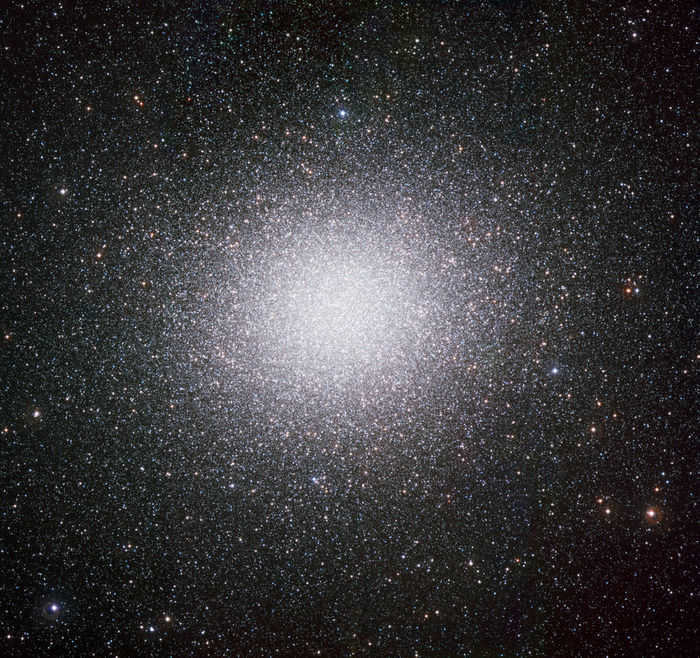
Ultimately, Omega Centauri stands as the most extensive and most luminous star cluster found in the Milky Way galaxy, housing approximately 10 million stars encompassed within a span of 150 sv. years. There have been conjectures regarding the presence of a colossal black hole within its core, although these hypotheses have yet to be substantiated.

14.9K post 45.3K followers
Community Guidelines
What regulations can be found here, other than the regulations established by the peekaboo itself 🙂
I was born too early. When will humans begin to conquer the stars?
And that’s only our galaxy, and there are millions of galaxies out there, it’s mind-boggling to try to comprehend it all.
Now envision how minuscule we are on that scale.
There’s a fascinating video on the size of the universe, https://youtu.be/35MhHG1dXI8.
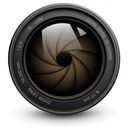
A small portion of our galaxy, the Milky Way.
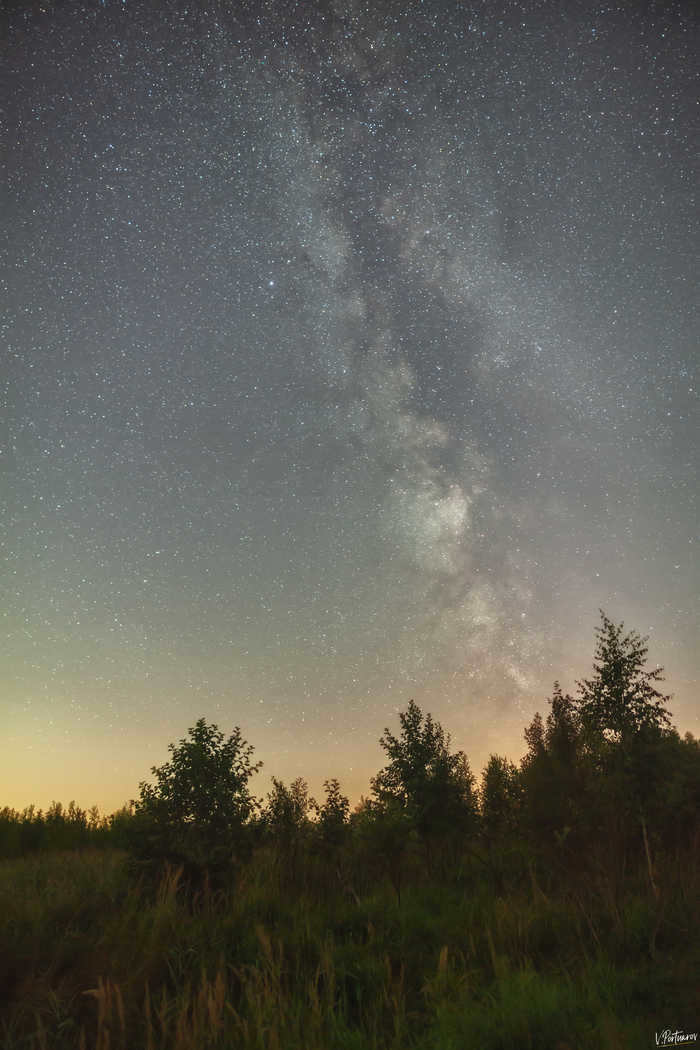
The Milky Way.
The Milky Way is a galaxy that is part of the Local Group of galaxies, which also includes the Andromeda Galaxy, the Triangulum Galaxy, and about 54 other smaller galaxies. It is estimated to be about 13.6 billion years old and has a diameter of about 100,000 light-years. The Milky Way gets its name from the Greek mythological story of Zeus, who was said to have spilled milk across the sky, creating the band of stars that we see as the Milky Way. The Milky Way is home to billions of stars, including our own sun, as well as other celestial objects such as planets, asteroids, and comets. It is also home to a variety of nebulae, which are clouds of gas and dust where new stars are formed. The Milky Way is just one of billions of galaxies in the universe, and studying it can help scientists learn more about the origins and evolution of galaxies as a whole.
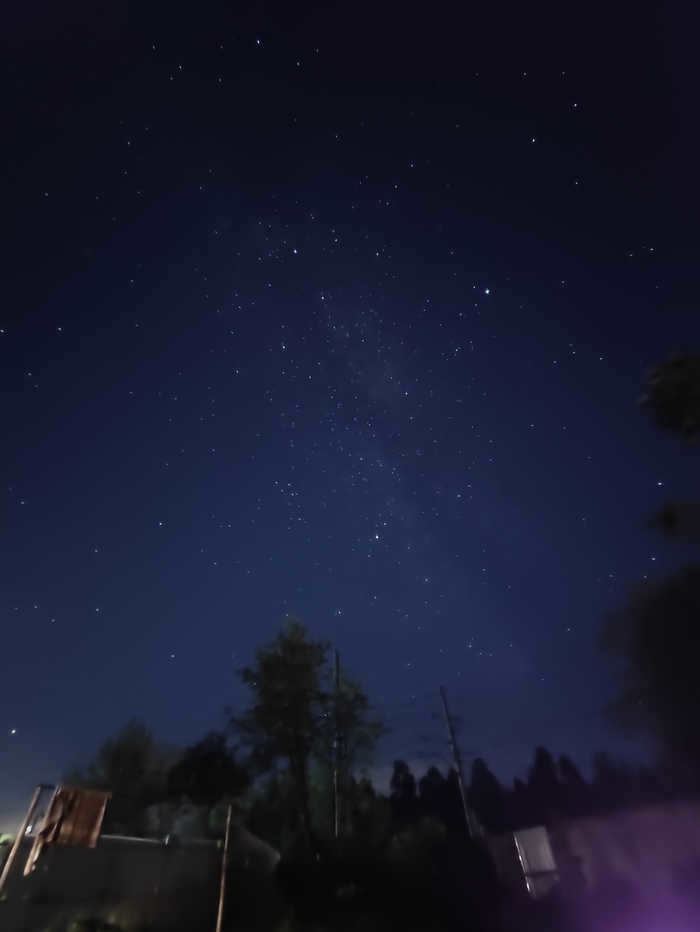
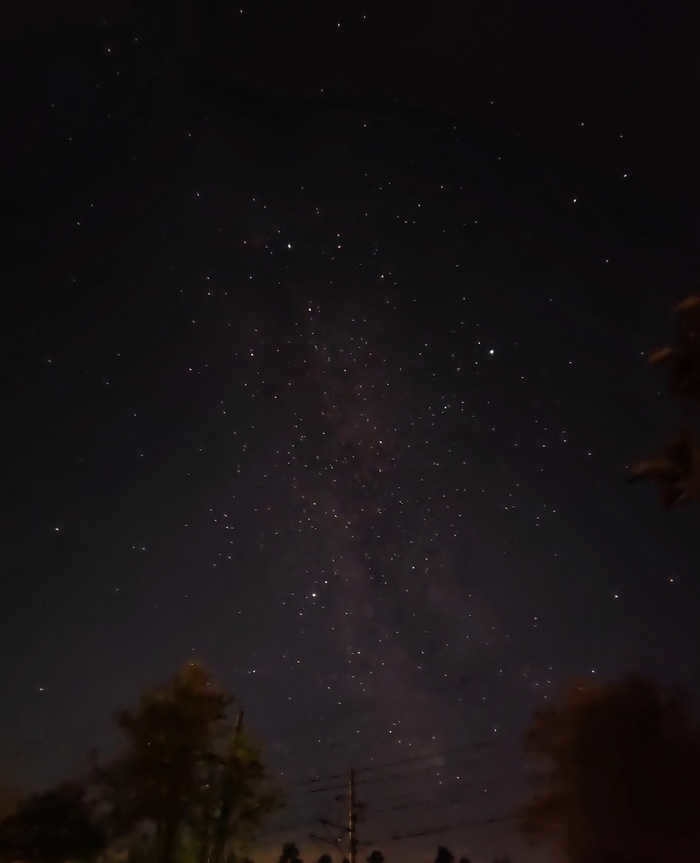
Today, it is possible to see the Milky Way with the unaided eye. I am currently located near Vyborg, and the feeling of joy overwhelms me. P.S I have a photo of it on my phone.


The Milky Way in Kazakhstan
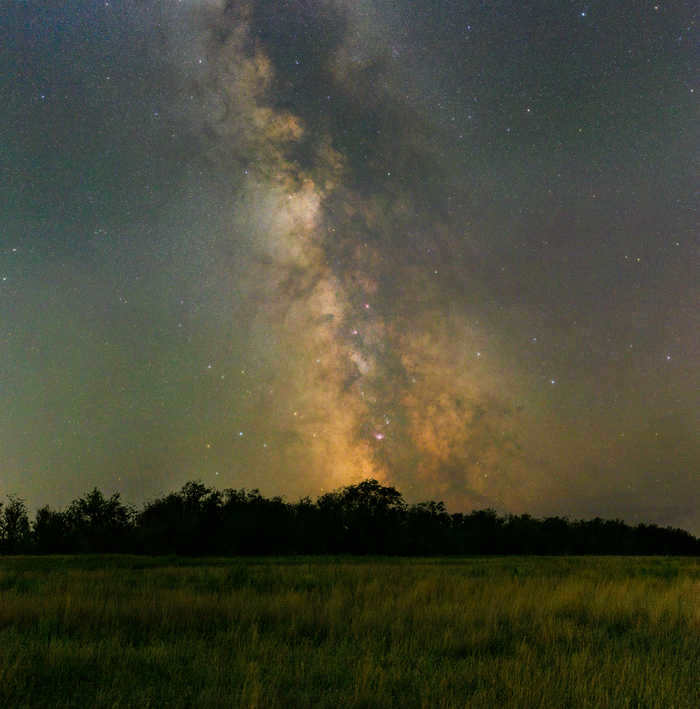
On August 12, 2023, this photo was captured in the West Kazakhstan region of Kazakhstan.
This stunning panoramic image consists of 16 individual photos, with 13 dedicated to capturing the sky and 3 focused on the stillness of the ground. The panoramic stitching was done using PTGui Pro, and further processing was carried out with the help of StarNet++ and Photoshop.
The equipment used for this shot includes a Canon 60D camera, a Samyang 35mm f/1.4 lens, and a Sky-Watcher Star Adventurer mount.
The bay in Cape Cod, Massachusetts is illuminated by the majestic sight of the Milky Way
If you were to embark on a time-traveling adventure one billion years from now, what wonders would unfold before your eyes?
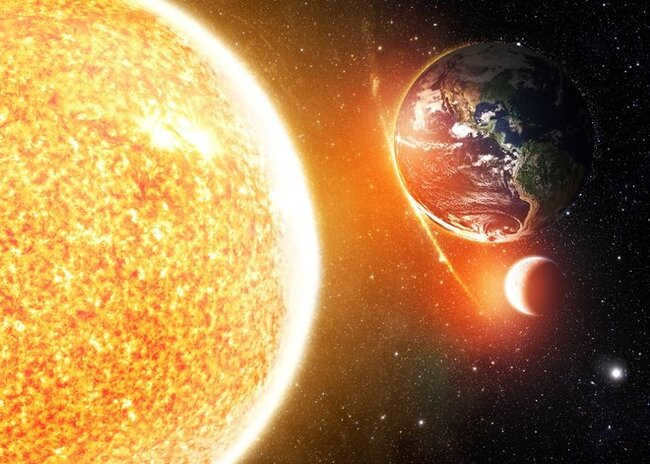
An artistic depiction showcasing the eventual demise of our planet Earth.
In the span of one billion years, our solar system will have undergone significant transformations. One notable change will be the loss of Saturn’s iconic rings as they gradually merge with its atmosphere. Currently, we have the privilege of witnessing the awe-inspiring beauty of Saturn in all its glory.
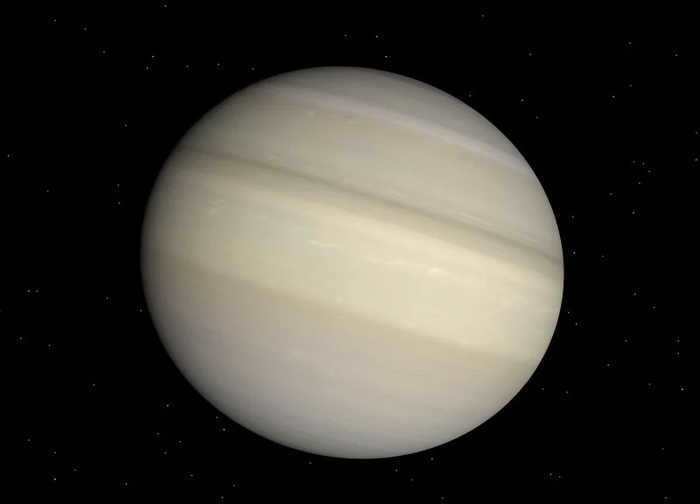
An artistic depiction of Saturn without its iconic ring system is presented. However, in the span of a billion years, the neighboring planet Mars is projected to acquire rings of its own. This phenomenon is attributed to the gradual descent of Mars’ satellite, Phobos, towards the planet’s surface. Over time, the tidal forces exerted by Mars will ultimately dismantle Phobos. Current scientific estimations posit that this event will transpire within the timeframe of 40-50 million years.
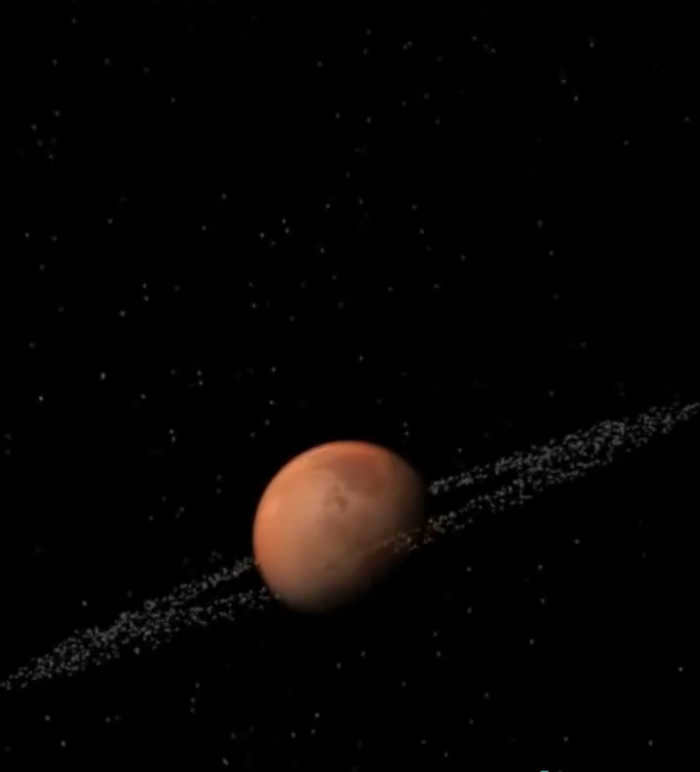
Throughout its existence, our small planet Mercury has always been the closest to the Sun. Despite its close proximity and surface temperatures exceeding 400°C, Mercury still manages to retain ice in the shaded areas of its poles. However, as the Sun continues to age, it will eventually vaporize all of this ice and ultimately consume the entire planet.
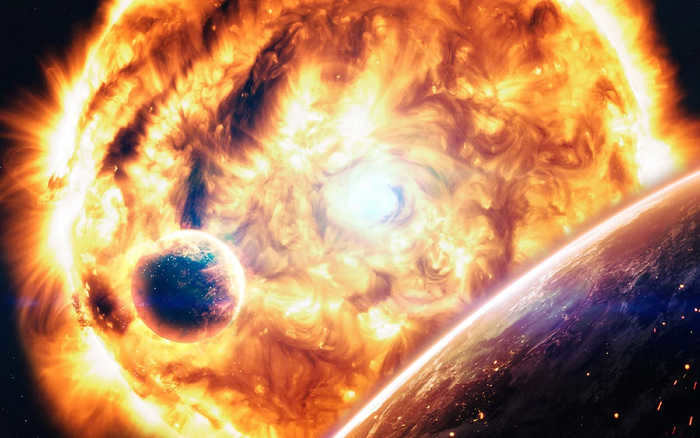
In the distant future, if you were to use a time machine to travel one billion years ahead, what would be the sight that awaits you? One of the fascinating things you would observe is Venus, often referred to as the “Sister Earth”. Although Venus shares similarities with Earth in terms of size, mass, and composition, it is vastly different in reality. Its surface is characterized by its monstrous appearance, with a dense atmosphere that creates a powerful greenhouse effect. This phenomenon leads to an incredibly high surface temperature of 467°C. Unfortunately, in a billion years, the existence of Venus will have come to an end due to the expansion of the Sun. As the Sun expands, it will burn up the atmosphere of Venus, ultimately leading to the demise of the entire planet. The same fate awaits Mercury as well.
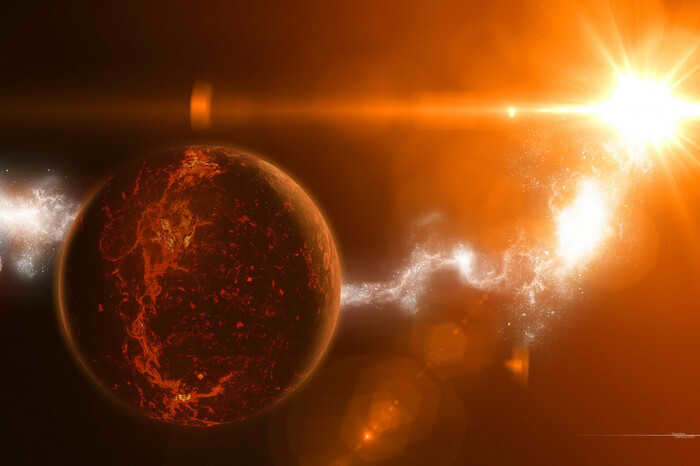
However, the fate of Earth remains uncertain. It is conceivable that a massive celestial object could bring about the destruction of life on our planet, an event that occurs roughly once every 100 million years. Alternatively, the unique evolution of our star system may result in the expulsion of the Earth/Moon system following the demise of Mercury and Venus, granting us reprieve from the fate that befell our inner neighbors. Alternatively still, the Sun could undergo such a dramatic expansion that solar radiation becomes unbearably intense and extreme.
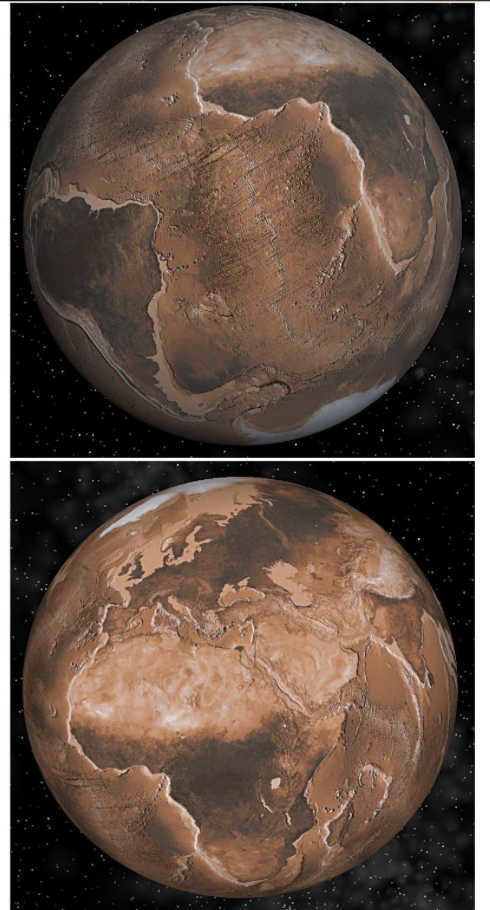
An artistic illustration depicts the desiccated planet Earth.
In the image below, the second frame shows the nearest large galaxy, Andromeda, which is rapidly approaching us at a speed of 120 kilometers per second. When it gets closer, its luminosity in the night sky will be as bright as multiple moons.
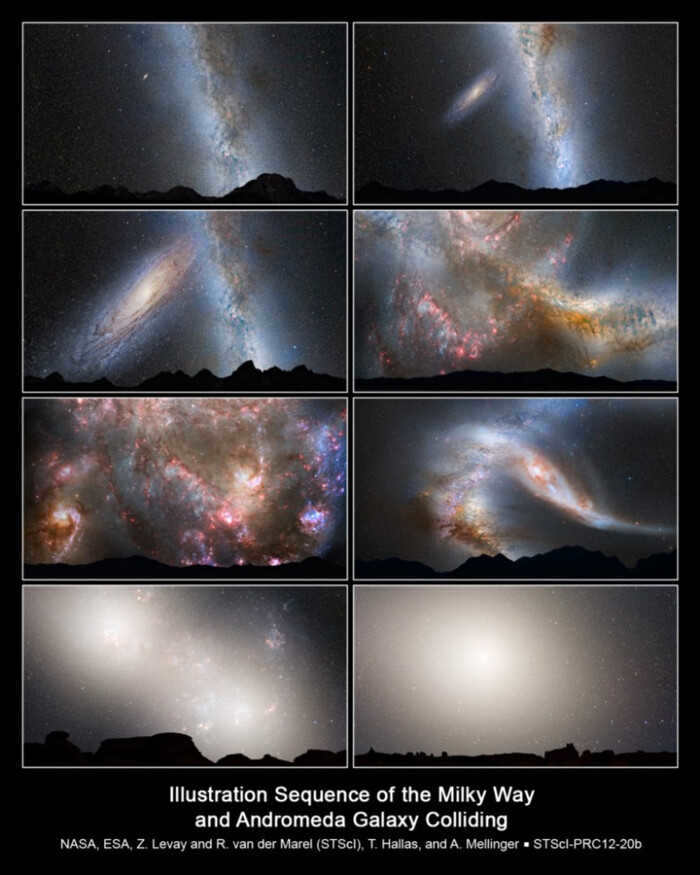
In the next 3-5 billion years, the Andromeda galaxy is anticipated to merge with the Milky Way. This event will have a profound impact on the structure of our galaxy and the appearance of the night sky. Currently, the Andromeda galaxy is located approximately 2.5 million light-years away. According to the most accurate simulations, the initial collision and subsequent explosive star formation (as depicted in frame 4 of the image above) will occur in approximately 3.8 billion years, which coincides with the “second Universal Year.” The merging process is expected to conclude around 5.5 billion years from now.
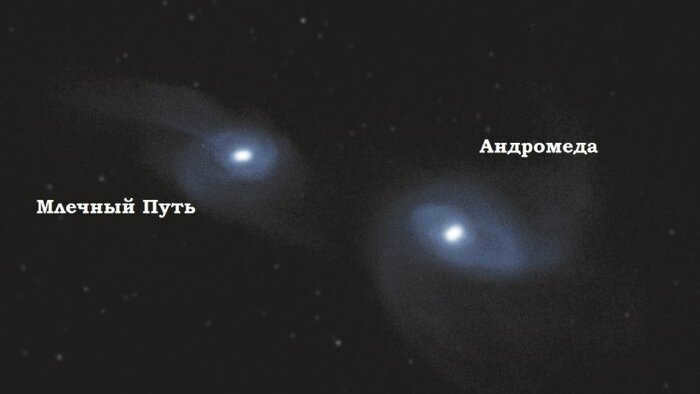

Gravity plays a significant role in the future evolution of the universe. Over the course of billions or hundreds of billions of years, our local group of galaxies will eventually merge with us. However, the influence of dark energy will cause all other galaxies and clusters that are currently unrelated to us to flee and move away from the observable part of the Universe.
Looking even further into the future, once the Sun transforms into a red giant, interesting changes may occur within our own solar system. Pluto and its moon Charon, along with many icy Kuiper Belt objects and Triton, a moon of Neptune, could potentially enter the habitable zone where temperatures are suitable for life to exist.
Currently, we are aware that these celestial bodies contain a significant amount of water ice, along with a variety of organic compounds. Surprisingly, some of them may even possess hidden oceans beneath their icy exteriors. The only drawback is the extreme cold, reaching minus 200 degrees Celsius. However, as the Sun gradually warms up, the temperature will eventually rise to match the conditions on Earth today.
Envisioning the potential future of our civilization is a challenging task. Nevertheless, the transformations occurring within our small section of the universe will undoubtedly be profound for all of us. With any luck, if such a time machine exists, it will possess the capability to travel back to our peaceful era.

Orion’s Constellation in Which Galaxy?
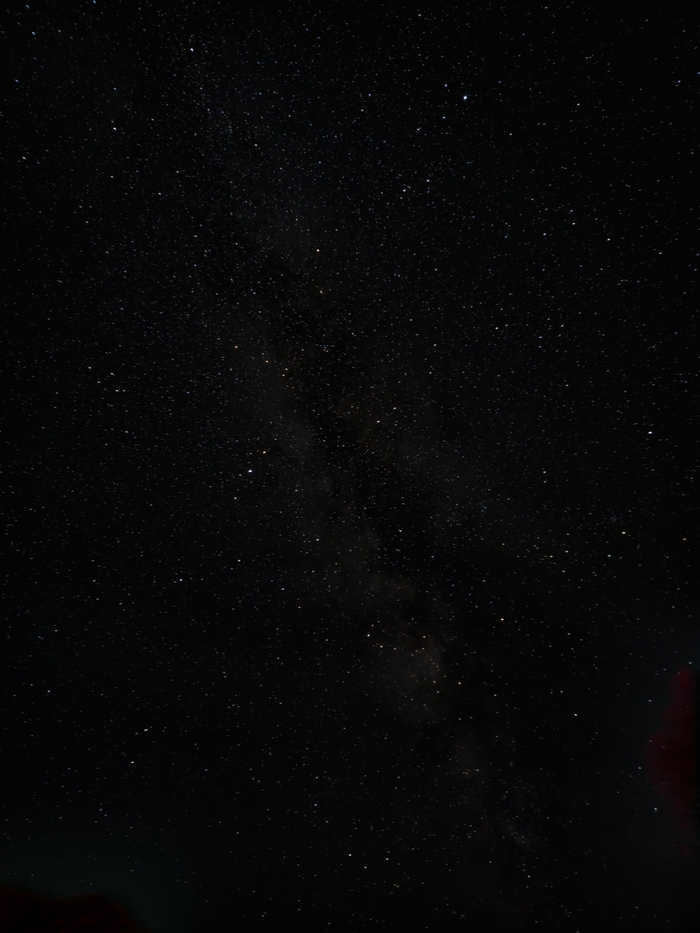

The Galaxy Named After Vera Rubin.
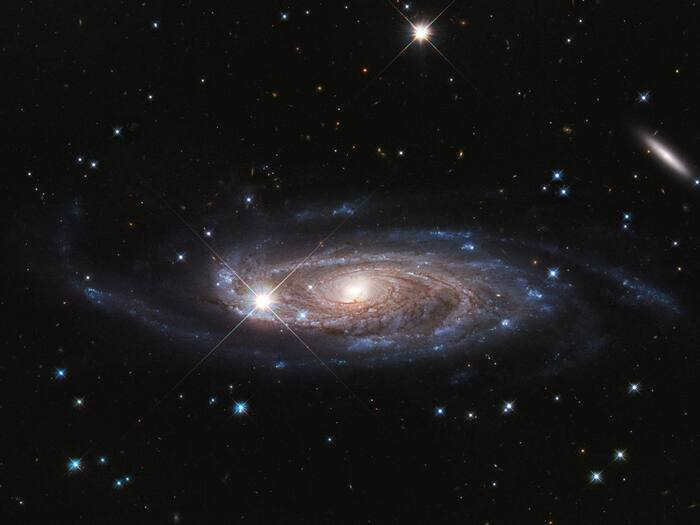
A breathtaking view of the Milky Way illuminating the picturesque hay field
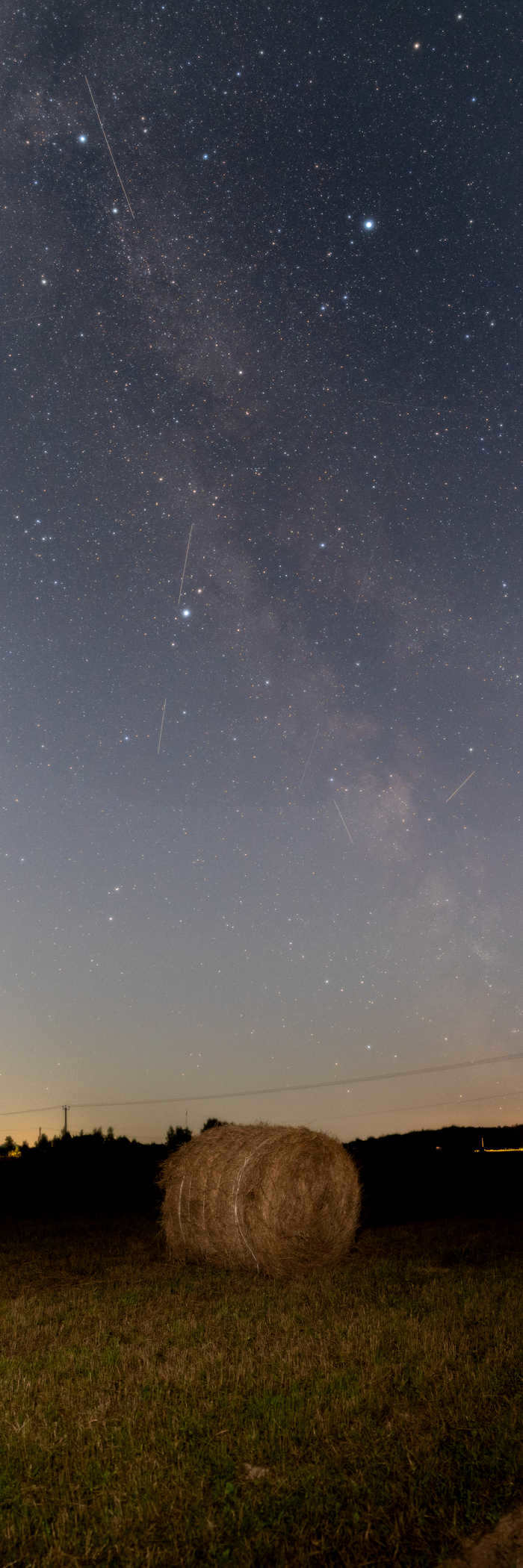
My initial encounter with the Milky Way
My inaugural endeavor to capture the magnificence of the cosmos was met with success as a celestial galaxy radiated its brilliance within the confines of my frame.
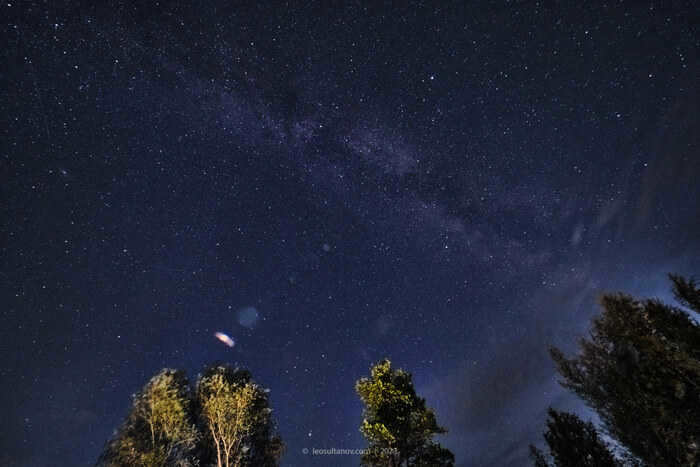
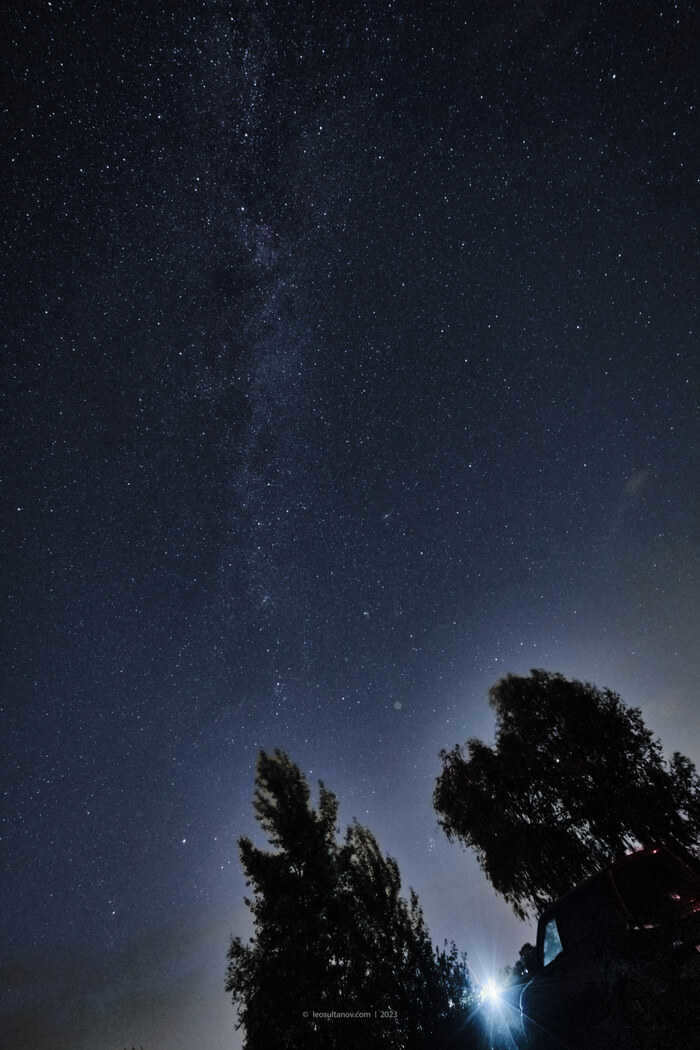

The Bubble Nebula NGC 7635 and the dispersed star cluster M52.
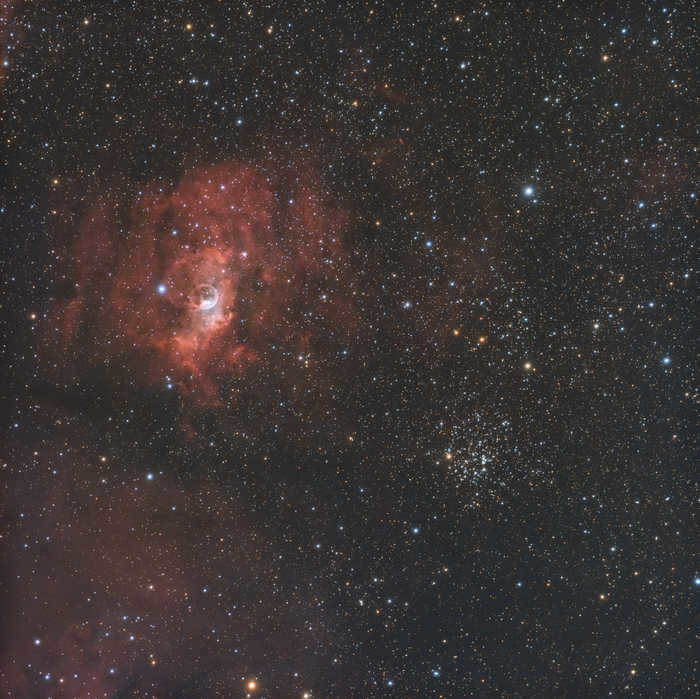
The Bubble Nebula NGC 7635 (LBN 549, Sharpless 162, Caldwell 11) is an emission nebula located in the Cassiopeia constellation. It is known as the “Bubble” because it was created by the powerful stellar wind from a hot and massive Wolf-Rayet star called SAO 20575 (BD+60 2522). This star has a magnitude of 8.7 and a mass ranging from 10 to 40 times that of our Sun. The nebula itself is part of a large molecular cloud situated at a distance of 7,100 to 11,000 light-years away from our Solar System.
In terms of celestial positioning, the Bubble Nebula is only 35 minutes away from the scattered star cluster M52.
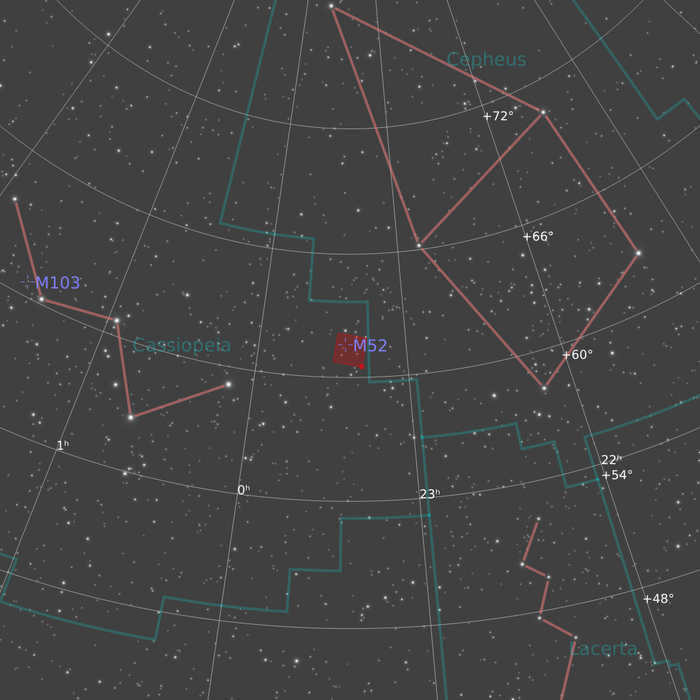
Observatory Equipment: William Optics Zenithstar 81 APO
Camera: ZWO ASI533MC Pro/ZWO ASI533MM Pro
Image Capture: ASIAIR Plus
Data Calibration/Composition/Processing: PixInsight
Post-Processing: Photoshop
Sky Condition: Orange Zone
Exposure Details:
Filter: Antlia Triband RGB Ultra Filter 2″
137 frames of 120 seconds
Filter: Antlia 3nm Narrowband H-alpha 1.25″
17 frames of 300 seconds
Camera Gain: 100
Total Exposure Time: 5 hours 59 minutes

The NGC 7380 diffuse star cluster is encircled by the Wizard Nebula as it undergoes evolution
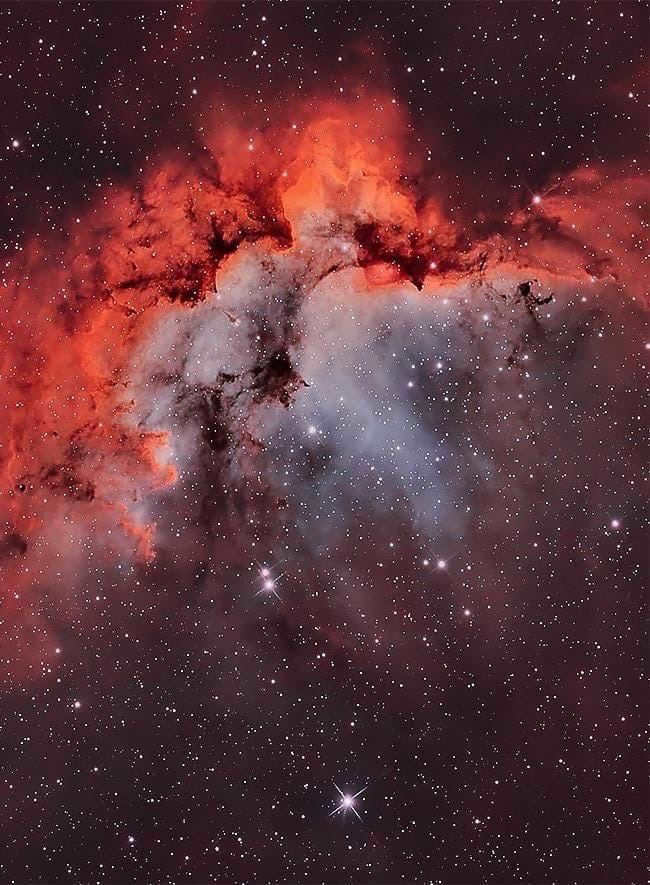
The arrangement of stars, gas, and dust in the Universe has formed a configuration that brings to mind an image of a sorcerer from the Middle Ages.

What you are seeing here is just a fraction of the vast expanse that we refer to as the Orion constellation.
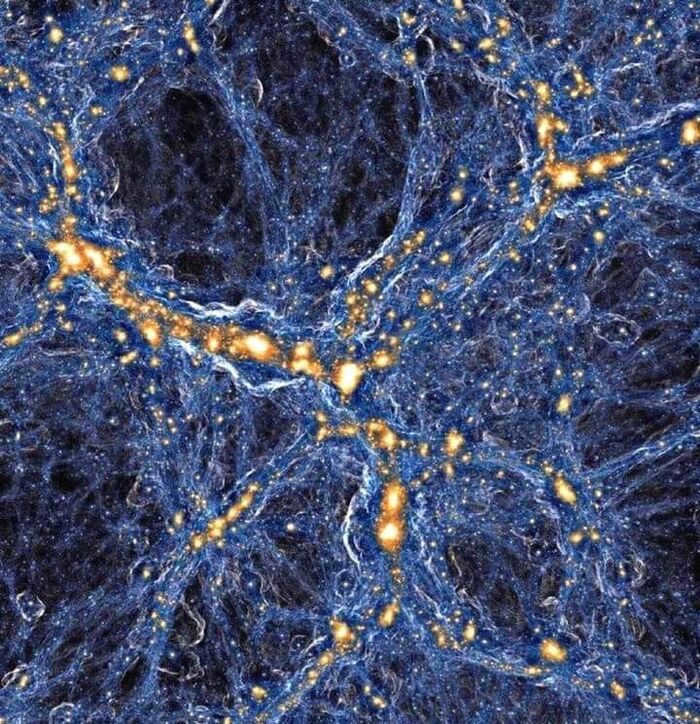
The formation shown in the image above is known as the Laniakia cluster, which consists of numerous galaxies represented by the yellow dots. Among these galaxies is the Milky Way, our own galaxy, and it is accompanied by approximately 100,000 other galaxies.

The constellation of Ara contains the star cluster NGC 6139 and the nebula NGC 6188
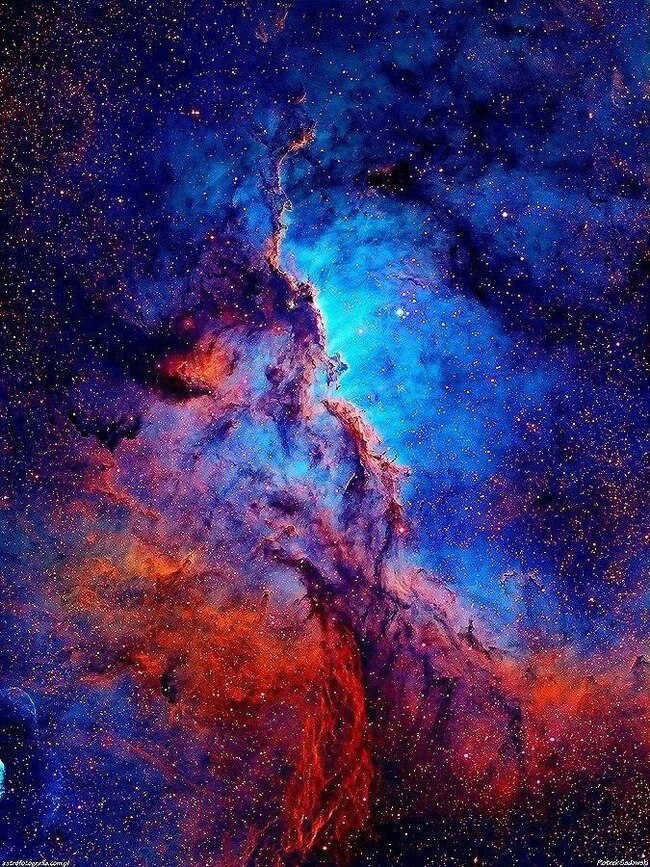
Mars, the Pleiades, the Hyades, and Orion in motion across the celestial dome
Finally, the night sky was clear! As I peered through my telescope, I also had a camera set up to capture a timelapse of the celestial dance.
I used a Canon 550D and utilized an intervalometer through Magic Lantern to capture the shots.
I then stacked the images using the PhotoLapse 3 program, resulting in a smooth motion effect with 20 frames per second.
Each frame was taken with a 10-second shutter speed and an ISO of 1600.
This stunning scene was captured in the Rostov region, specifically in the Kamensky district.
P.S. A heartfelt thank you to all my subscribers! Your support has allowed me to receive donations, which I can use towards a warm cup of tea, cookies, and new equipment for future adventures in astrophotography.

The Constellation of Orion: A Celestial Marvel in the Depths of Space
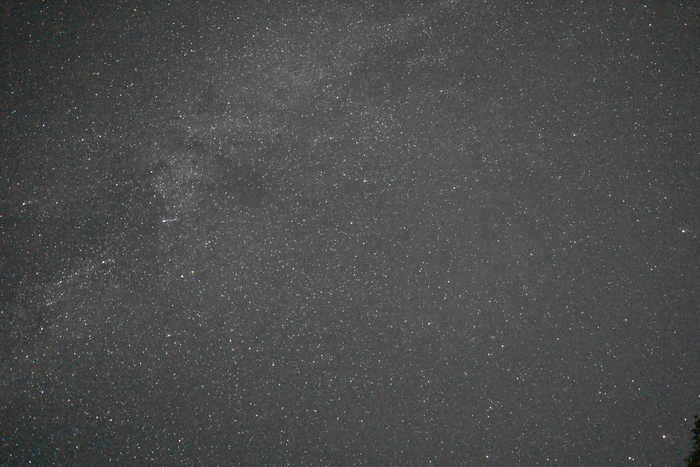
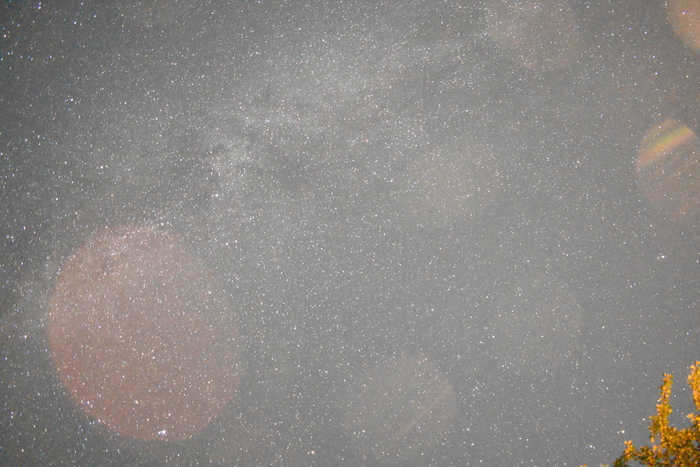

Experimenting with various shutter speeds (ranging from 10 seconds to 1 minute) and adjusting the sensitivity of the photo matrix, I captured different shots. Interestingly, the third photo showcases a subtle backlighting effect caused by the lamp inside the hut.

A pair of clusters in the Perseus constellation
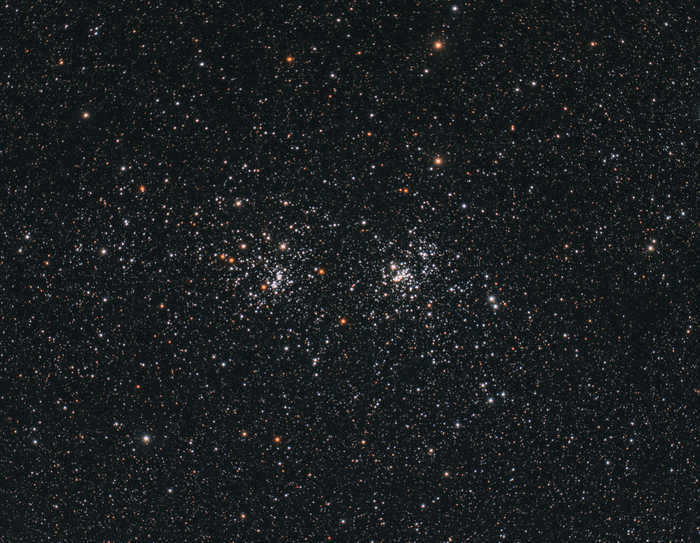
The Caldwell 14, also known as the double cluster, can be easily observed in the Perseus constellation without the need for any special equipment. Comprised of two separate clusters, NGC 869 and NGC 884, this celestial phenomenon is situated approximately 7500 light years away from Earth. The remarkable age of both clusters is estimated to be 14 million years, and they are home to prominent red giants. The dynamic nature of these clusters is evident as various astronomical events occur at a rapid pace. A notable comparison can be made to our own Sun, which is approximately 4.5 billion years old.
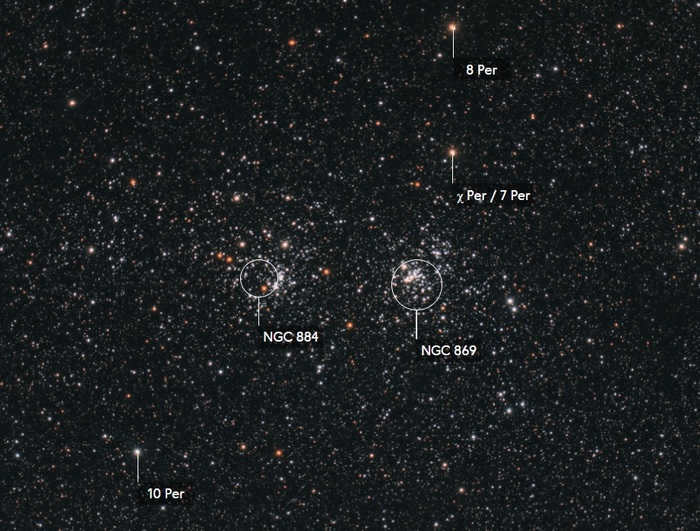
The previous session of the previous season, when the night sky was not particularly dark, but I was determined to capture something, so I opted to explore the star clusters. This photo was taken on April 30th, and I have only recently had the opportunity to process it.
Telescope: Celestron 6SE OTA
Camera: Altair Hypercam 269C PRO TEC
Mount: SkyWatcher EQ5 PRO Synscan GoTo
Guide: TS-Optics Deluxe 50 mm Guiding/Finder scope
Focus reducer: Starizona HyperStar C6 v4
Software: APT, PHD2, PixInsight, Ps, Lr

Double star cluster and h Perseus (H and Ash Perseus)
χ and h Perseus (Hi and Ash Perseus) are two star clusters that can be observed with the naked eye. These clusters are situated in the Perseus Arm of the Milky Way Galaxy, approximately 7500 light-years away.
On a clear night, it is possible to spot them easily using binoculars (I will explain how to locate them in the sky below). I captured this image using a Nikon D3000 camera and a Newton 150mm telescope, without the use of a guiding system.

Undoubtedly, by utilizing superior gear and a swifter shutter speed, one would observe a distinctly contrasting image:
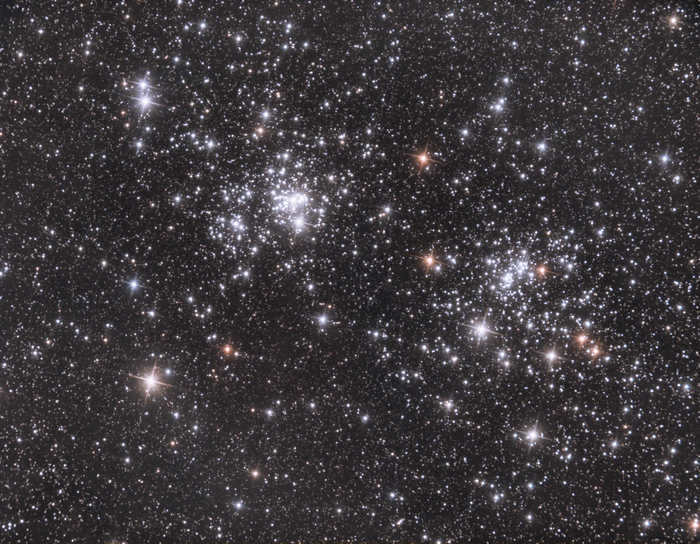
The star cluster was initially recorded in the catalogue of star clusters by Greek astronomers prior to our era. Presently, astronomers have ascertained that the cluster is relatively young, having an age of only 14 million years. In addition to their youthfulness, both star clusters are physically positioned in close proximity to one another within space.
Due to their youthful age, NGC 869 and NGC 884 (the catalog number for both entities) collectively house at least 400 hot blue-white supermassive and exceptionally bright giant stars, each having a mass equivalent to approximately 20,000 solar masses. Furthermore, both star clusters are rapidly approaching us at speeds exceeding 30 kilometers per second.
How can we locate the Hee and Ash Perseus in the night sky?
Under clear skies and in areas with minimal light pollution, the double cluster will appear as a solitary group of stars. However, when observed through binoculars, it will divide into two distinct clusters.
1. Convenient option (mobile app)
Install the Star Walk application on your phone. Open the app and search for NGC 884. Additionally, this application features a mode that allows you to point your phone at the sky and receive information about what celestial objects are currently visible.
2. Using constellation references
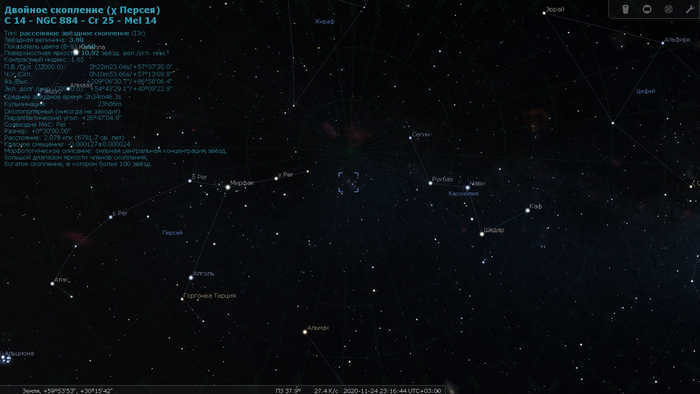
Typically, I search for the constellation Cassiopeia (which creates a “W” or “M” shape in the night sky). By looking slightly away from the leftmost point in the “W” towards the bright star Mirfak, we will be able to observe this cluster.
To locate this cluster, you can utilize the free website https://stellarium-web.org/. Simply input your location and time (preferably in the evening) and search for “NGC 884”.
May everyone have clear and serene skies!

NGC 869 & NGC 884: The Fascinating Pair of HI & ASH PERSEUS Double Clusters
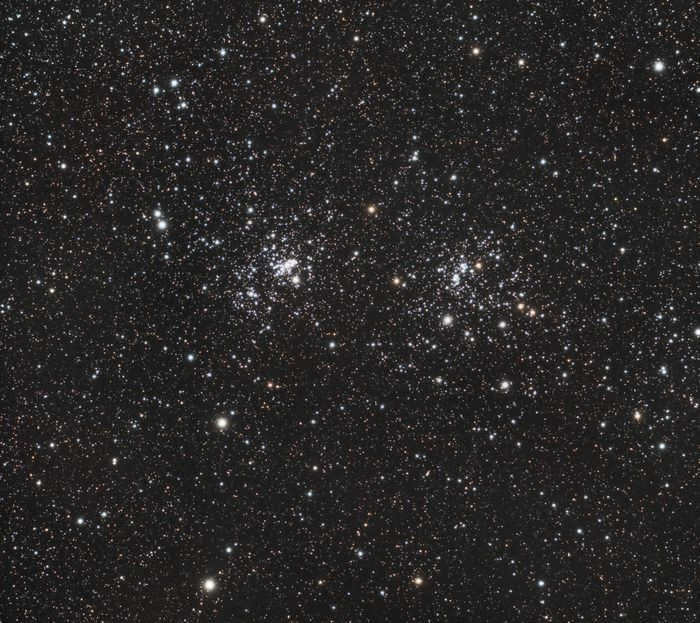
The Caldwell 14, also known as the Double Cluster, is a star cluster in the Perseus constellation that is located 7500 light-years away.
These two clusters, named NGC 869 and NGC 884, are often referred to as galactic star clusters.
While younger than our Sun, the hottest and brightest stars in both clusters are reaching the end of their life cycles, with the most massive stars already evolving into red giants, particularly noticeable in NGC 869.
Equipment used: William Optics Super ZenithStar 81 Telescope
Camera: ZWO ASI294MC Pro (Cool)
Mount: HEQ5PRO SynScan GoTo
Telescope guide: SVBONY 60/240
Guide for the Camera: ZWO ASI462MC with Optolong UV/IR Cut
Additional equipment: William Optics 0.8x Reducer/Flattener
Sky enhancement: Orange zone
Exposure: 60 x 60 seconds, ISO/Gain: 120 – Optolong L-Pro 2


The depths of the universe revealed: envisioning the night sky within a star cluster
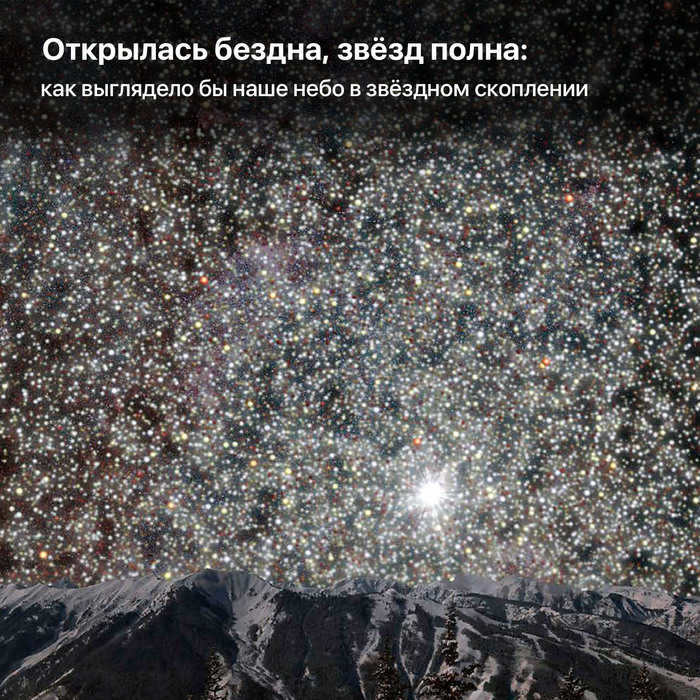
A moonless night reveals a breathtaking sight of a starry sky. However, our view from Earth is limited to only 6,000 stars. This is due to the Sun’s position, which is located quite far from the center of the Galaxy, resulting in a low density of stars surrounding it.
In the Astronomy journal, scientists have published an intriguing article that explores how our sky would appear if Earth were situated within the nearest globular star cluster, 47 Tucana. In this cluster, the stars are much closer together, offering us the opportunity to witness a multitude of luminaries with the naked eye. We would be able to see over 130,000 stars, with approximately 10,000 of them shining brighter than Sirius, the brightest star in our current night sky.
"A vast expanse of stars would unfold before us;
“There is no limit to the number of stars, and there is no end to the depths of the abyss,” Mikhail Lomonosov expressed in a poetic manner. Utilizing his own innovative telescope, he gazed at the sky and beheld a multitude of stars, far surpassing what the naked eye could perceive. He comprehended the vastness of the starry abyss.
However, the possibility of life emerging within a star cluster seemed uncertain. Considering the high concentration of stars, it is highly likely that some of them would regularly bombard the planets with radiation, essentially “cleansing” them. Furthermore, even in a dormant state, the surrounding stars would emit such intense radiation that the aurora borealis would be visible even at equatorial latitudes.

At this time, 58,750 educational institutions have the opportunity to receive extra combined discounts ranging from 2% to 25%. To determine the specific discount available to all staff members at your educational institution, please access your personal Infoworks account.


Enroll in our professional development course today!
Effective Management in Preschool Educational Organizations
We are pleased to offer a special discount for your educational institution. The amount of the discount will depend on the number of your colleagues who have previously enrolled in Infoworks courses.
Currently, we have additional cumulative discounts available ranging from 2% to 25% for a total of 58,750 educational institutions. To find out the specific discount that applies to all employees of your educational institution, simply log in to your personal Infoworks account.


Professional retraining program
Theory and Methodology of Teaching Art in Vocational Education
We can apply your educational institution’s discount to this offer (the amount of discount depends on the number of your colleagues who have completed Infoworks courses).
Currently, 58,750 educational institutions are eligible for additional discounts (ranging from 2% to 25%). To find out the discount applicable to all employees of your educational institution, please log in to your personal Infoworks account.


What is the name of a cluster of stars in the sky?
Assistance in guiding a young adult towards a suitable career path? Common errors when selecting a profession
Breakdown of the presentation by individual slides:

Basic details
Illustrations
Distances to groupings
Chemical makeup
Scattered cluster distribution in the Milky Way
Importance of dispersed groupings


4 slide Examples
One of the most prominent examples of scattered clusters is the Pleiades cluster. It is also recognized as one of the objects listed in Messier’s catalog – M45. In the night sky, the Pleiades can be observed without the aid of telescopes in the constellation Taurus. This cluster is situated approximately 135 parsecs away from Earth. Its age is estimated to be around 75 to 150 billion years. The total number of stars within the cluster is approximately 3000. The Pleiades cluster is predominantly composed of hot blue stars, with a significant presence of brown dwarfs and white dwarfs. It is worth mentioning that, considering the cluster’s relatively young age, it is unlikely that white dwarfs have formed through the usual process of shedding the outer layers of a red giant, which normally takes several billion years. Instead, it is more probable that they have formed through the transfer of matter from high-mass stars in close binary systems.
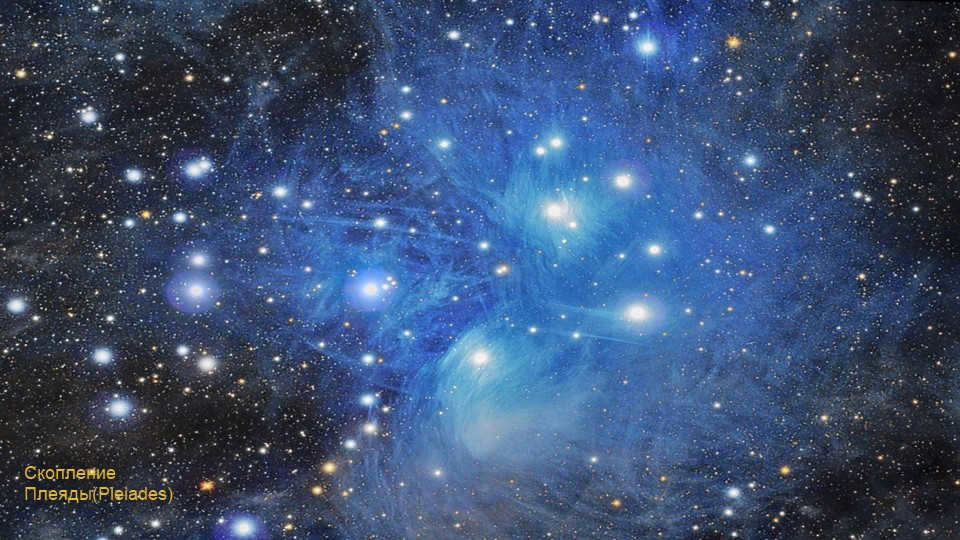
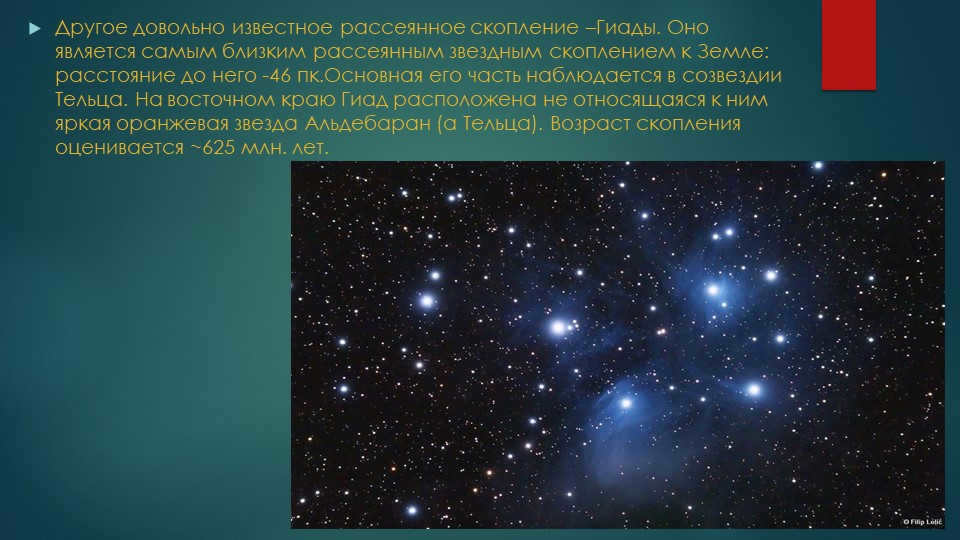
Slide number 6 presents information about the Hyades, which is a widely recognized dispersed star cluster. This particular cluster holds the distinction of being the closest diffuse star cluster to Earth, with a distance of approximately -46 pc. The majority of the Hyades is visible in the Taurus constellation. Situated at the eastern boundary of the cluster is the unrelated Aldebaran (α Taurus), a prominent orange star. Scientists estimate that the Hyades cluster is around 625 million years old.
![Hyades[6]. Yellow squares encircle some of the brightest stars in the Hyades cluster.](/wp-content/uploads/images/kak-nazyvaetsja-skoplenie-zvezd-na-nebe_74.jpg)
On the 7th slide, the Hyades cluster is depicted. Bright stars in the cluster are highlighted with yellow squares, creating the shape of the letter “V”.
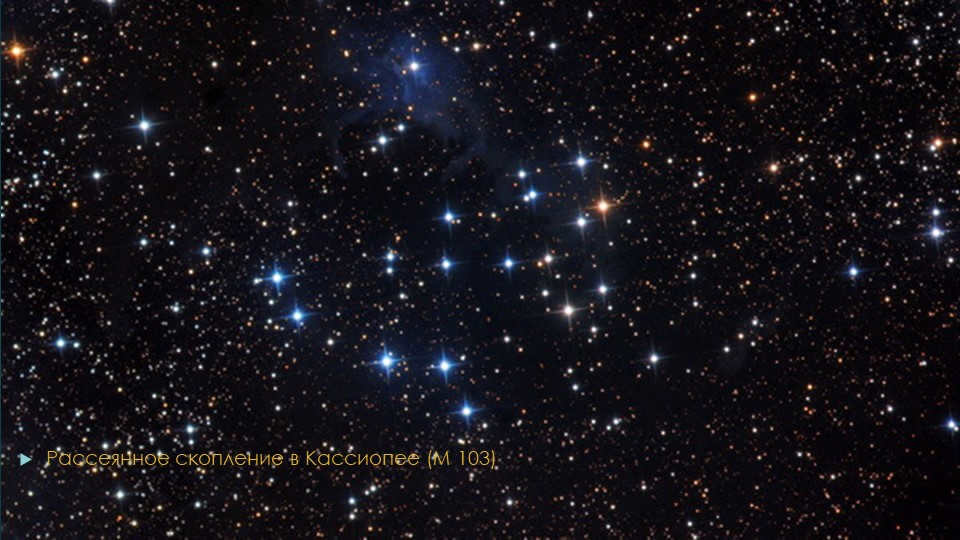
![Wild Duck cluster, (M 11)[9]. Located in the constellation of Shields, distance to Zek.](/wp-content/uploads/images/kak-nazyvaetsja-skoplenie-zvezd-na-nebe_78.jpg)
The Wild Duck cluster, also known as M 11, consists of 10 slides. It is located in the constellation Shields and is approximately 1840 pc away from Earth.
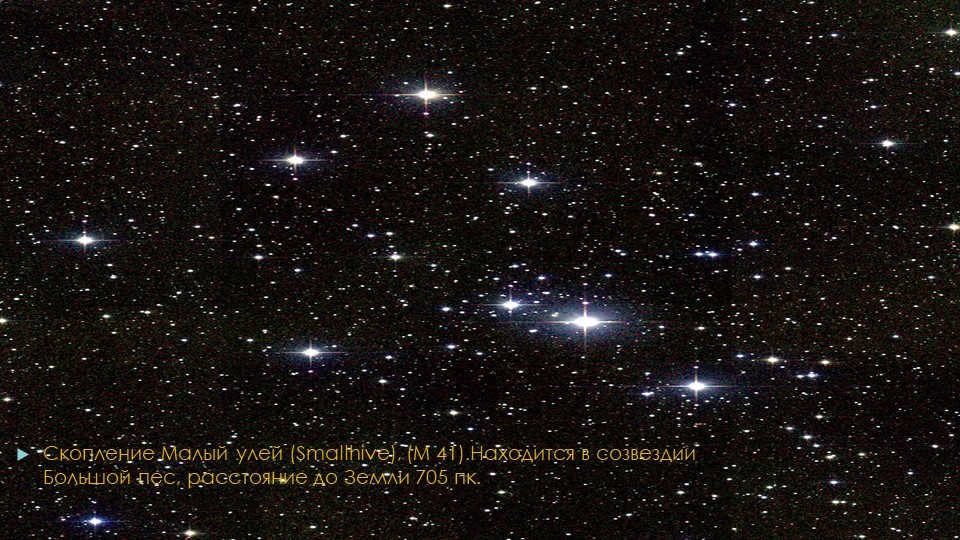
Slide 11: The Smallhive cluster, also known as M 41, can be found in the Big Dog constellation and is located at a distance of 705 parsecs from Earth.
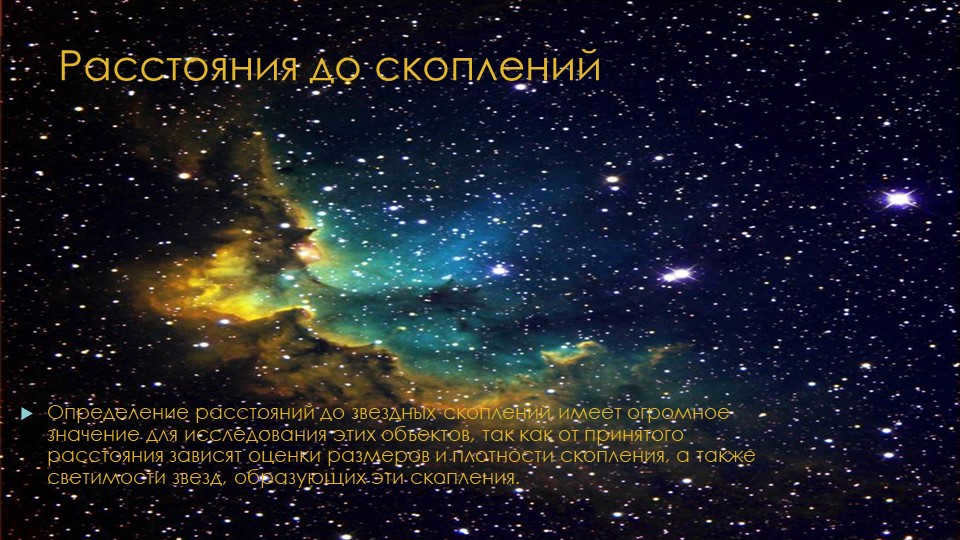
12 slide Cluster Distance Measurements.
The measurement of distances to star clusters is crucial in the investigation of these celestial bodies, as the evaluation of cluster dimensions and density, along with the luminosity of the stars that form these clusters, relies on the accurate determination of distance.
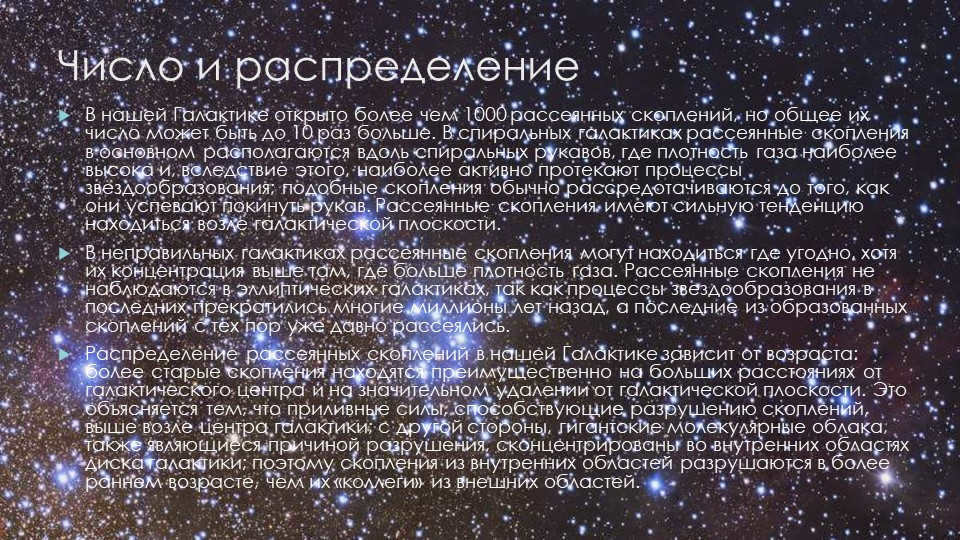

Slide 13: Name and arrangement
In our Galaxy, more than 1000 scattered clusters have been found, but there could be as many as 10 times that number. Scattered clusters in spiral galaxies are mainly located along the spiral arms, where there is a higher density of gas and more active star formation. These clusters often disperse before leaving the arm. Scattered clusters tend to be found near the galactic plane.
In irregular galaxies, scattered clusters can be found anywhere, but they are more concentrated in areas with higher gas density. Elliptical galaxies do not have scattered clusters because star formation in these galaxies stopped millions of years ago and any remaining clusters have dissipated.
The distribution of scattered clusters in our Galaxy depends on their age: older clusters are usually found farther from the galactic center and at a significant distance from the galactic plane. This is because the tidal forces that contribute to cluster destruction are stronger near the center of the galaxy, while giant molecular clouds, which also cause destruction, are concentrated in the inner regions of the galactic disk. As a result, clusters in the inner regions are destroyed at a younger age compared to those in the outer regions.

Slide 14 – Chemical Composition
The determination of chemical composition in stars is based on analyzing the equivalent widths of absorption lines in their spectra. In scattered clusters, the brightest stars are typically of spectral class B or A, with blue supergiants (class O) only found in the youngest clusters. The chemical composition of scattered clusters tends to be quite uniform, with the metallicity (the amount of elements heavier than helium in stars) varying by no more than five times from the average solar value. Metallicity decreases as the distance from the center of the Galaxy and the disk plane increases. In older clusters, the average metallicity tends to be lower.


Slide 15: Destiny of stellar conglomerations
Many scattered groups of stars are inherently unstable: due to their small mass, the speed required to escape from the system is lower than the average speed of the individual stars. These groups deteriorate rapidly within a few million years. In many cases, the radiation emitted by young stars causes the gas that formed the entire system to be expelled, reducing the group’s mass to the point where it breaks apart quickly.
Groups that have enough mass to remain gravitationally bound after the surrounding cloud dissipates can maintain their structure for tens of millions of years, but internal and external factors will eventually cause them to break apart. When one star passes very close to another, it can increase the velocity of one of the stars to the point where it exceeds the group’s escape velocity. These processes result in a gradual “evaporation” of the group’s members.
On average, star groups are affected by external factors, such as passing near or through a molecular cloud, once every half billion years. The gravitational forces from such close encounters typically destroy the star group, transforming it into a stellar stream. Although the stars in the stream are connected and move in the same direction with the same velocities, the large distances between them prevent the group from being classified as a cluster. The length of time it takes for a group to decay depends on its initial stellar density: denser groups last longer. The estimated half-life of a group (the time it takes for half of the original stars to be lost) ranges from 150 to 800 million years, depending on the initial density.
After a group is no longer gravitationally bound, many of its stars retain their speed and direction of motion in space, forming what is known as a stellar association or a moving group of stars. For example, several bright stars in the Big Dipper are former members of a scattered group that has evolved into a moving group called the “Big Dipper Moving Group of Stars”. Eventually, due to slight differences in their velocities, the stars will disperse throughout the galaxy. Larger groups become streams if their velocities and ages are similar; otherwise, the stars are considered unassociated.

16 Slide The role of dispersed star clusters
The investigation of dispersed star clusters plays a crucial role in understanding the internal structure and evolution of stars. The significant variations in the ages of stars within different clusters, as well as their close proximity within the same cluster, enable a direct comparison between the conclusions of stellar evolution theory and observational data. For instance, the analysis of Hertzsprung-Russell diagrams for dispersed clusters has provided valuable insights into the genetic relationship between red giants and GP stars, thus greatly advancing our understanding of the internal structure of stars.





